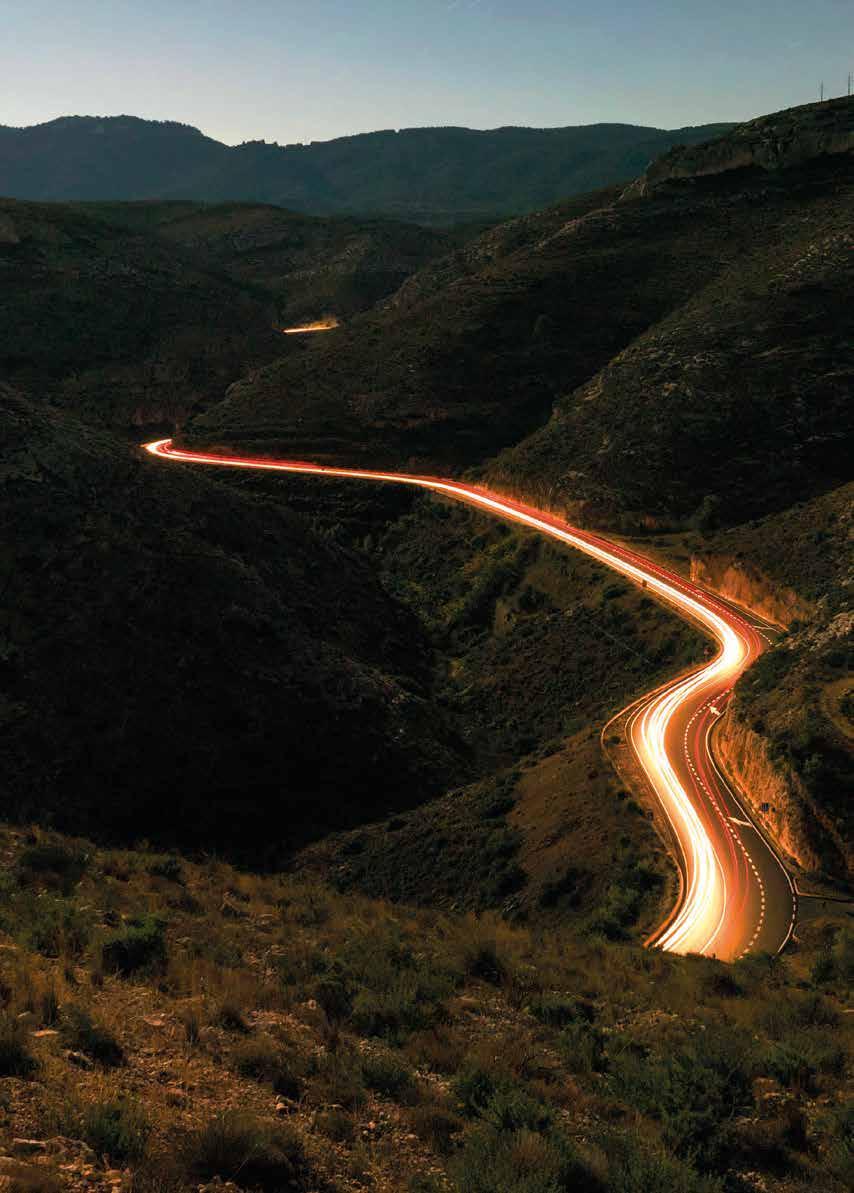brooklands bulletin



Brake components
Clutch & Gearbox
Cooling & Fuelling
Electrical


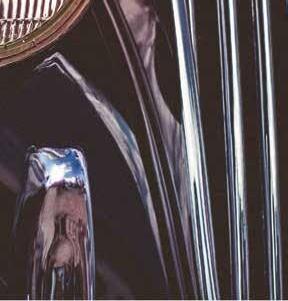
Engine & Mechanical
Steering & Suspension
Moss began supplying sports car parts in 1948, now benefitting from decades of experience, we are one of the world’s oldest and largest sports car parts and accessories specialists.
Today, our mission is to keep the great marques alive and well by supplying parts and accessories of the highest standard. We offer friendly, professional and knowledgeable service and hold a vast number of parts in stock, available from our branches or online backed by fast, reliable delivery worldwide.
Specialising in Austin-Healey, Classic Mini, Jaguar, Mazda MX-5, MG, Morris and Triumph.

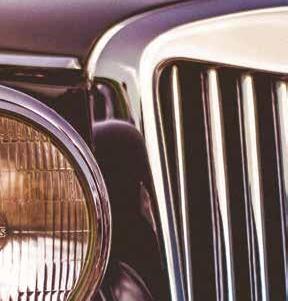


Brooklands may be a museum with a brief to preserve and promote its history, but it’s also a place with a long tradition of innovation. This pillar of Brooklands spirit is much in evidence in this issue as we saw the Motoball matches played on the Start/Finishing Straight. It’s an unusual idea, but one that provided plenty of entertainment and fun for those who spectated in person and over social media channels.
Mention of these channels is another reminder of how Brooklands is an everevolving site. By welcoming online activity, the Museum has weathered the worst of 2020’s challenges and I am lucky enough to have heard from many of you how much you have enjoyed this output. We are very grateful for all of your letters, emails, tweets and online posts.
There are other new chapters opening at the Museum. As well as an exciting new television series being filmed at Brooklands about the work behind the scenes, we also have the partnership with the Heritage Skills Academy to ensure there is a new generation of technicians and engineers able to look after the machinery that we all love and marvel at.
By embracing these opportunities, even in adverse circumstances, I feel buoyed up about what lies ahead for the Museum. There are still hurdles to overcome as Covid-19 restrictions remain in place, but the can-do approach of everyone involved with Brooklands is both inspirational and reassuringly familiar.
Alisdair Suttie Editor Brooklands Bulletin


Brooklands Members is the official support organisation for Brooklands Museum and is dedicated to raising funds for the preservation of the historic Brooklands site.

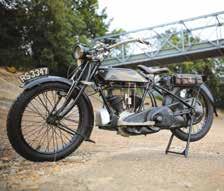
Members receive the Bulletin six times per year and enjoy free admission to the Museum, except when major events are taking place, in which case additional charges may apply. Club Level Members have access to the Clubhouse Bar on Thursday, Friday and Sunday lunchtimes.
For full details of membership benefits, contact the Members Administrator, Sarah Dover 01932 857381 ext 226; or wwwbrooklandsmembers.co.uk where you can find the latest news on Brooklands.

Brooklands added to its records and feats in motorcycling with the first Motoball Tournament held on the weekend of 26-27 September. The unusual form of the ‘beautiful game’ involved fivea-side matches with four riders and a goalkeeper using a full-sized pitch played on the Finishing Straight.
Organised by the Hayes and Southall Motorcycle Club Motoball Section, the game was popular in the inter-war years, but this was the first time it had been played at Brooklands. With Covid-19 restrictions eased, Steve Castle from Brooklands Museum, along with members of the Motorcycle Volunteer team,
The 88 civilians killed during an air raid on Brooklands were remembered in a memorial service held on 4 September, exactly 80 years on from the bombing of the Vickers aircraft factory. The service was led by the Bishop of Guildford and among those attending was Cyril Spittle, pictured, who was at Brooklands when the raid happened at 1342hrs.
Family and friends of those killed and injured during the raid were present to remember the 88 who died and more than 400 others who were injured.
The Museum commemorated this tragic event with the opening of a new Air Raid Shelter Walkthrough Experience. It uses images and the voices of those who survived the attack to tell the story of the raid and Brooklands’ role in Second World War.

This new exhibit has been funded by BAE Systems, formally British Aerospace Corporation including Vickers Armstrong. Brooklands was a target for the air raid as it was where the Vickers Wellington and Hawker Hurricane were built.
did a superb job of making sure everyone was safe and enjoyed the spectacle.
Ray Attewell, Team Manager for the Hayes and Southall Motorcycle Club said: ‘Motoball is gladiatorial! It was fast and furious, and huge fun.’ The final score after four matches in front of the Brooklands spectators was: Young Upstarts 2, Veterans Nil.
The winner’s trophy and awards arrived in a Bentley 4.5-Litre and presented at arm’s length using a litter-picking grip to ensure safe social distancing!
Club Level Members can now book their entry to the Museum and the Members’ Bar in one phone call to Hospitality. This means there is no need to make separate bookings to enter the Museum and bar.
A list of Members who are booked in will be passed to the Campbell Gate for admission and they will be admitted with no need for a booking reference.
Hospitality will have all the information required for track and trace, and we have reduced the ticket capacity overall on bar days to avoid overselling tickets.
The Membership Office would also like to remind all Members to keep their email and contact details up to date. This helps greatly when contacting Members and making sure you receive the Newsletter and information about Brooklands.
Jennifer LarwoodThree very special visitors dropped in on Brooklands at the end of September with an important mission. The vintage aircraft arrived to try out the new all-weather runway surface on the airstrip at Mercedes-Benz World.
The new surface makes it safe for aircraft to land in poor conditions and the arrival of this trio was the perfect opportunity to make sure it’s ready for when the Museum can run fly-in events again.
Oldest of the three aircraft was the blue De Havilland DH.80A Puss Moth that was built in 1930. It led the way in to the Brooklands Airstrip and was followed by the yellow 1962 Piper PA-18-150 Super Cub that made a perfect landing. Last to land was the 1942 Tiger Moth in RAF camouflage colours, though this particular Moth did not serve during the Second World War and was sold to the French Air Force in 1945.

Joe Philbey was the lucky pilot flying the Tiger Moth into Brooklands and he said: ‘Thank you to Brooklands. It was a great experience and I’m looking forward to many more in the future. It was a fantastic opportunity to land at such an iconic airfield.’
To see a video of the aircraft landing, check out the Museum’s Facebook page.
In my last message, I concluded by saying that ‘hopefully, the worst of coronavirus is behind us’, but unfortunately the recent surge in the number of people infected is both disappointing and worrying. Although the Museum has been able to open since the end of July, albeit operating under some limitations, the latest restrictions that have now been imposed present an even greater challenge, and it now appears likely that they will be in place for several months. I know that you will all understand the need for the Museum to comply with the requirements now in place, but I also appreciate how frustrating these can be, especially as Members you have always enjoyed the freedom to visit whenever it suited you, without the need to book in advance.
We have recently introduced revised arrangements for Club Level Members that enable them to book their Museum entry and bar table in one phone call. We will continue to look for ways in which we can make improvements to the arrangements wherever possible. We are working closely with the Museum to ensure that even in these challenging times, the membership experience is still special, and look forward to a staged return to normality. However, even my crystal ball doesn’t tell me how long that will take.
We are adapting as best we can to the changed environment. A good example has been maintaining our popular talks programme by moving content to digital platforms, such as Vimeo, YouTube, and of course the ubiquitous Zoom. At our last Committee meeting, we approved the purchase of some additional equipment that will enable us to live stream talks and events over the coming months, which I am sure will make some dark winter evenings feel brighter. We are particularly grateful to Mark Jarman, currently co-
More than 100,000 Volunteer hours have gone into restoring Brooklands Museum’s Vickers Wellington, known as ‘R for Robert’, since it was successfully salvaged from Loch Ness 35 years ago.
The Brooklands-built Wellington was discovered by a team of American Loch Ness Monster hunters after the aircraft ditched in the loch on 31 December, 1940 when it developed engine trouble during a training flight. All eight aircrew escaped, but the rear gunner sadly died when his parachute failed to open.

A full feature on R for Robert will appear in the next issue of the Bulletin.
opted to our Committee, who has brought his enthusiasm and expertise to bear on our digital presence, and has enabled us to move quickly in response to the drastically changed circumstances in which we find ourselves.
At our last Committee meeting, we unanimously agreed to award Honorary Membership to Julian Temple. Until recently, Julian was the Heritage Estates Project Manager at the Museum, after serving in various roles for 34 years. We will recognise Julian’s contribution and achievements at a later date when we will be able to formally present him with Honorary Membership, but suffice to say that he will be sorely missed. Julian’s knowledge of Britain’s aviation heritage is unrivalled, and his enthusiasm for it is infectious. I am sure that we will continue to see him at the Museum from time to time, and that he will take full advantage of his membership. Hopefully, he will also continue to contribute to the Bulletin over the coming years.

In normal times, we would at this time of year be looking forward to our Annual Dinner, but even with all the advances in technology over the last few years, we are unable to deliver food and drink through our digital channels. I have been in touch with our President, Damon Hill, concerning next year’s Dinner and as soon as we are able to do so will confirm a date for 2021, coronavirus and Damon’s Formula One duties permitting. As far as other events planned for this winter are concerned, please keep a close eye on the monthly newsletter, and if you have not already provided a contact email address to the Members’ Administrator, please do so.
Neil BaileyOn the 11 August, I was flying my little aircraft, it was a wonderful day, and I flew for about two and a half hours around the south coast. On my way back to Fairoaks, near Reigate, at 1300-feet the engine stopped.
Calmly, I made my Mayday call and prepared for an emergency landing in a field just below in Gatton Park, which belongs to The National Trust. The landing was fine, albeit fast, but the aircraft hit something with its left wheel, causing the plane to make a sudden 90˚ left turn.
My dear wooden plane was destroyed. The left wing disappeared, the engine and fuel tank were thrown a few feet to the left, and I hit the dashboard despite having the seat belt on. Rather quickly, people came to my rescue, so I have been told, though I must admit I don’t recall anything.
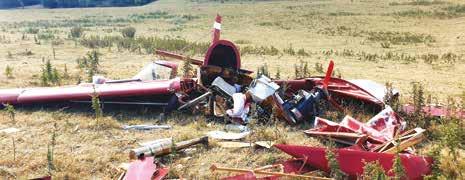
After a couple of weeks at St Georges Hospital, I returned home to recover. Part of my treatment consisted of going to Brooklands two days later to absorb some of the energy that all of you bring to the place. As always, magic, and thank you for all of the kind wishes.
When one looks at the picture of the day by Andrew Wright of The National Trust, it is incredible to see me alive and walking. Frankly, on that day, my life lease was extended and I am determined to make the most of it, so I can’t wait to buy a new plane!
Julian AubertThe Association of Heritage Engineers (AoHE) has announced an event to celebrate launching a new format to include all vehicles over 16-years old. Called the OMG (extraOrdinaryMotorGathering), it will be held on 2 May, 2021. A venue is yet to be confirmed and entry will be by ticket only.
The 16-year mark for distinguishing classic cars has been drawn as this is the age of the youngest apprentices on the Heritage Skills Academy course, which has just announced a new educational partnership with Brooklands Museum to become their second teaching site.

Brooklands was the first museum member of the AoHE and Allan Winn, former Director and CEO of Brooklands, is an honorary vice-president of the association.
The AoHE’s Director Dominic TaylorLane said: ‘We want to encourage all those with a passion for engineering and the sustainability of skills and the repair culture.’
Brooklands Museum’s Royal Patron, His Royal Highness Prince Michael of Kent, had a special blue Rolls-Royce to inspect on his tour of the Concours of Elegance held at Hampton Court in early September. The original owner of the 1933 Saxe Blue, Barker-bodied Phantom II Continental Sports Saloon was Captain Sir Malcolm
Campbell, more famous for blue cars and boats that were less luxurious but capable of far greater speeds. This car was Sir Malcolm’s third Phantom and he admired the model so much that he wrote the official Phantom II sales brochure The Best Rolls-Royce Yet Produced Gareth Tarr

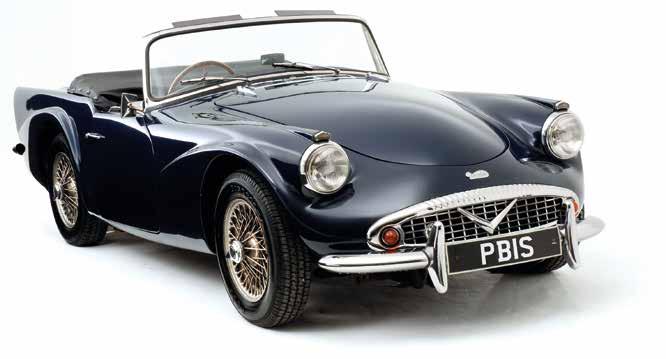

Unit 6, Studley Court, Guildford Road, Chobham, Surrey GU24 8EB
Unit 6, Studley Court, Guildford Road, Chobham, Surrey GU24 8EB
Tel: 01483 722 923 • web: www.dclass.co.uk
Tel: 01483 722 923 • web: www.dclass.co.uk
email: dclassautomotive@hotmail.co.uk
email: info@dclass.co.uk

D:class automotive @dclassauto @dclassauto
d:class automotive specialise in full interior management and restoration of all classic cars. Our knowledge is second to none in supplying period correct carpets, leather or vinyl.




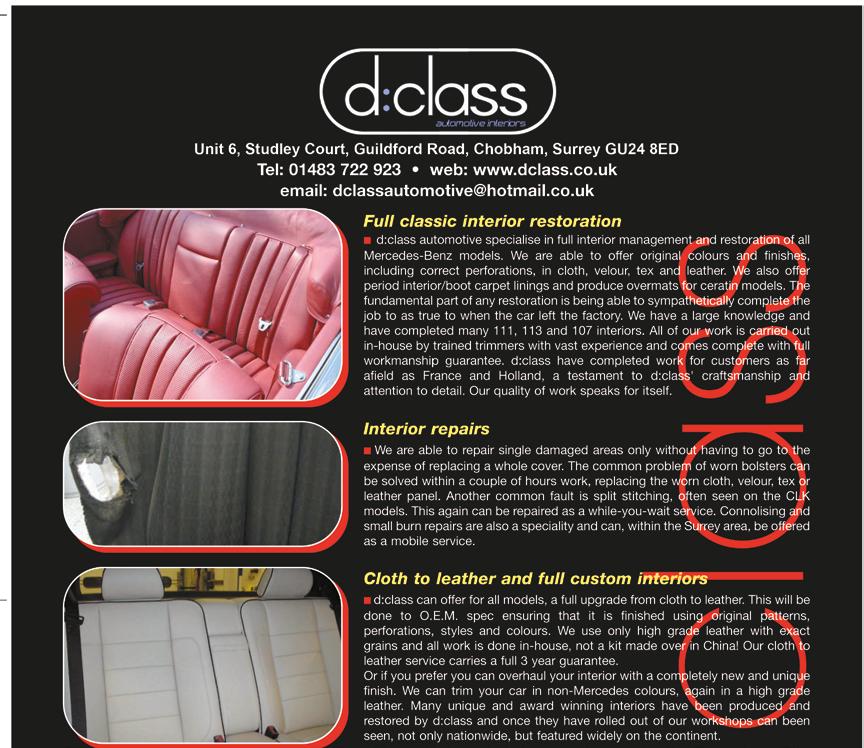
We are very well known and respected in our field of expertise for such marques as Mercedes Benz, BMW, Ferrari, Rolls Royce and Porsche.
All our work is carried out in-house by trained trimmers with vast years of experience and all works come complete with our full workmanship guarantee. d:class have carried out work for customers worldwide and we are happy to work with any possible logistics required for shipping of parts or cars and this is a true testament to the craftmanship and attention to detail that we put into our work. Our quality of work speaks for itself.
We can repair single damaged areas only without having to go to the expense of replacing a whole cover. The common problem of worn bolsters can be solved within a couple of hours work, replacing the worn cloth, velour, tex or leather panel. Another common fault is split stitching, often seen on the newer model of cars. This again can be repaired as a whilst you wait service. We specialise in warranty work for many manufacturers for the likes of McLaren, Lamborghini, Jaguar, BMW, Mercedes and Ferrari to name a few.
d:class can offer for all makes of car a full upgrade from cloth to leather. This will be done to OEM spec ensuring that it is finished using original patterns, perforations styles and colours. We use only high graded leather with exact grains to match factory finishes and all work is carried out in house. We do not use off the shelf kits and all our work carries a 3-year guarantee.
Alternatively, if you prefer you can overhaul your interior with a completely new and unique finish. Using the brightest leathers on the market or designing your own custom bespoke design on our state-ofthe-art CNC stitch, embroidery and perforation machine. If you can think it, we can create it.
Many unique and award-winning interiors have been produced and restored by d:class and once they have rolled out of our workshops they can be seen nationally and internationally across, not only our own social media but many social media influencers and renown publications.
A full hood fitting service is available in house for a wide range of vehicle manufacturers, we specialise in classic Mercedes hoods. All our hoods come with a 1-year guarantee and are available in a wide range of colours to suit. We can supply and fit OEM where available or aftermarket hoods.

Many convertible owners experience the common issue of the deterioration, discolouration and eventual cracking of the perspex rear screens, within the workshop we can carry out a replacement service of this issue to most vehicles with the exact thickness perspex required.
We are located in Surrey, 15 minutes from junction 10 or 11 of the M25 and from the A3. Collection can be arranged of your vehicle depending on distance.


September was bookended by two events that represent everything that is unique and special about Brooklands and the community of people who care about and support it.

At the beginning of the month, there was a moving outdoor service to commemorate those who died or were injured in the most devastating bombing in Surrey during the Second World War. Eighty-eight people were killed and more than 400 injured when Brooklands was bombed on 4 September, 1940. The service was attended by two people who were present on the fateful day, as well as families of many others. The Bishop of Guildford led prayers and the Lord Lieutenant of Surrey, Chairman of Surrey County Council, and Mayor of Elmbridge paid their respects. Wreaths were laid by BAE Systems who supported the occasion and by the Secretary of Brooklands Members, among others.
The names of all those who died were read out and Wendy White-Winchester brought home to everyone how terrifying the raid would have been when she read her mother’s memories of trying to run to safety and hearing bullets striking the metal staircase around her as the bombs fell.
The air raid shelter on the Finishing Straight now has an exhibition about the bombing raid which includes recordings of people talking about their memories from the day. Do visit it next time you’re at the Museum.

At the other end of the month, the spirit of competition, daring, adrenaline and even danger came to Brooklands in the form of a Motoball Tournament, which is football played on motorcycles. Visitors were captivated and entertained by the skill and bravery of the two teams and the Museum was full of the sounds and smells of motorcycles competing against each other in a modern version of this game, which was invented in the 1930s. We very much hope they will return to the Museum next year.
Another recent highlight for me was driving Daisy, the 1904 Siddeley once owned by Ethel Locke King, co-founder of the
Brooklands Motor Course. It was very exciting and challenging to drive a car of this age, and an honour to be the first woman to drive Daisy since Ethel Locke King used her.
Our thoughts are now turning to half-term when we will have new self-guided activities and challenges for families at the Museum. There are also demonstrations of vehicles from the Collection on the Finishing Straight every day, subject to the weather. We very much look forward to seeing you then and in the run up to Christmas.
Tamalie Newbery

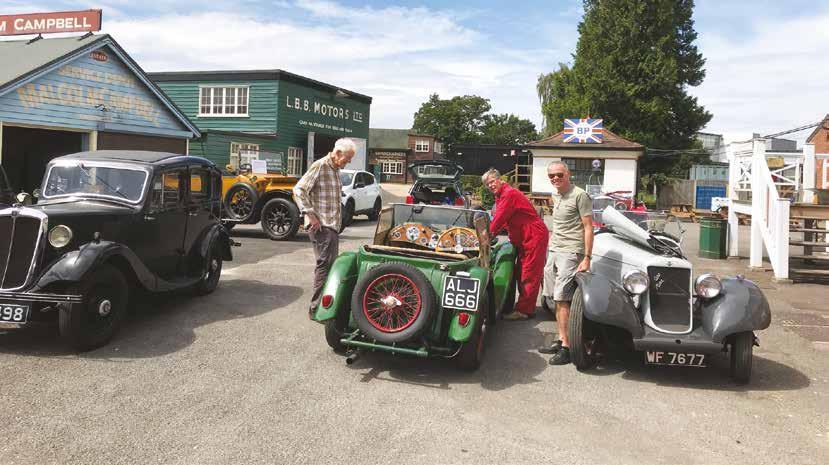
Early July brought the news we’d all been waiting for that the Museum would reopen on 1 August. Little did we know the volume of work that awaited the Motoring Volunteers. During our first visit, all of the cars were removed from the Campbell and ERA sheds to allow for a deep clean and the chance to run each vehicle, possibly for the first time in nine months. It quickly became apparent that prolonged inactivity had caused problems for more than 80 per cent of the cars.
Writing this six weeks in to the reopening, much work has been completed, but with more to do. The increased use of the vehicles for demonstration runs has thrown up unexpected issues and highlighted weaknesses. We’ve also been working under the close scrutiny of the film crew who are making the series about Brooklands to be broadcast on the Yesterday channel in 2021. Still, we’re glad to be back.
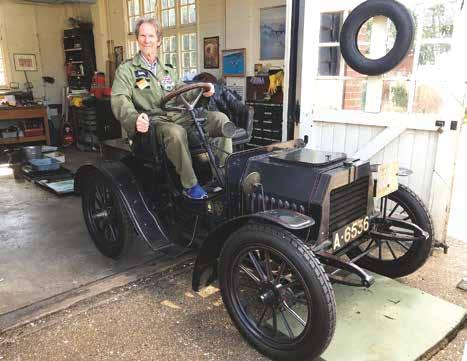
There has been an annoying misfire from the engine when using Daisy on demonstration runs along the Finishing Straight. It recently came to a head when the engine stopped and could not be started again. On removal of the top of the trembler coil that generates the spark, it showed a very small grub screw had become detached. The screw is one of a pair that holds in place the oscillating contact plate on the trembler coil. Attempting to put the screw back into place, I said to the onlookers that it would be just my luck to drop it and, with that, the screw fell on to the Finishing Straight. A search party was organised with everyone on their hands and knees, similar to a scene of crime investigation. After about 30 minutes of identifying small black stones, it was decided to have a break and resume the search after lunch.
Resuming the search for about 20 minutes, a cry of Eureka went up from Debbie Crawt who had found the grub screw attached to a magnet she had been brushing the surface of the track with. A large white rag was placed under the trembler coil just in case the screw was dropped again. On starting the engine, the misfire had disappeared and Daisy was ready just in time for Tamalie Newbery to be filmed having her longawaited drive of Daisy.
Roger HorsfieldThe Napier would not start as there was a suspected problem with the Autovac supplying petrol to the carburettor. The Autovac is a device that uses internal valves and the vacuum in the inlet manifold to draw up petrol into an internal reservoir from the fuel tank at the rear of the car. The Autovac was stripped and rebuilt a number of times but it still appeared not to be working. It was then discovered the fuel line from the tank was blocked. On blowing back the fuel pipe with an air line and draining the tank of black sediment and refilling with fresh petrol, the engine was cranked over and started. The Napier is now running very well and has been used a number of times on demonstration runs.
Roger Horsfield
After lockdown, the Morris Eight proved even more difficult to start than normal. The engine was known to be very worn and had needed a new head gasket some years ago. With a judicious application of Easy Start and some new spark plugs, the Morris was eventually persuaded to start but would only run on three out of the four cylinders. A quick diagnosis was a blown head gasket, worn piston rings and burnt valves.
It was decided to remove and check out the engine. On inspection, the pistons were found to be damaged, the rings in pieces, gasket blowing and the valves burnt. New and good secondhand parts have been sourced and work is now ongoing to refurbish the motor.
 Tony Bantick
Tony Bantick
While driving the red Terraplane on the Finishing Straight, the gear lever broke just below the gear knob to make changes rather awkward. With the car in the Dunlop garage workshop, the carpet and steel floor were removed to reveal the gearbox. Then, the long gear lever was unbolted and removed to the work bench. Our expert metal man, Colin Shaw, made up and fitted a strong metal bush to repair the two broken sections. It was noted that the gear lever had been damaged before, at the same point.
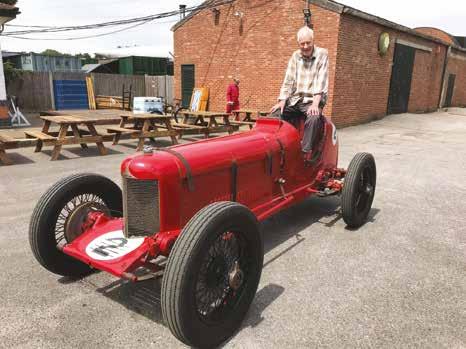
While the work was being carried out, we took the opportunity to change the oil in the clutch and gearbox. Yes, the clutch runs in a very thin oil to protect the cork linings from wear. We should mention at this point, that all the tasks described above were being filmed at the same time. Each stage of the work needed to be explained in detail and filmed several times, so the repair took a little longer than expected.
Finally, with the gear lever, floor and carpets back in place, the good old Terraplane was driven on to the Finishing Straight again. Job done.
John Philips






R.S.WILLIAMS Limited, official Aston Martin Heritage specialists, offering in-house machining; manufacture; engine building (including our famous upgrades); worldwide parts distribution and workshops for service, repair, upgrade and preparation of your car to unparalleled standards. Full race support and preparation.



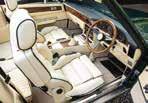
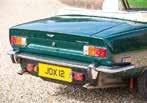

R.S. Williams Ltd are proud to offer this beautiful V8 Vantage Volante in Green with Magnolia hide. Factory serviced from new until 1988 then RS Williams maintained since. 2 owners from new. Verified mileage of 31,900. Engine upgraded to 7.0ltr specification. 1 of only 2 pre-production manual Vantage Volantes built before the first official Vantage Volante was released. A very special car and stunning in every aspect
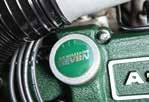
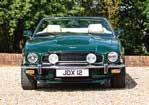





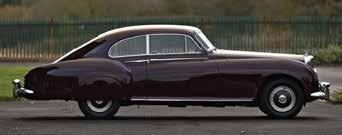
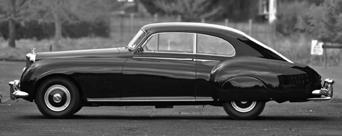


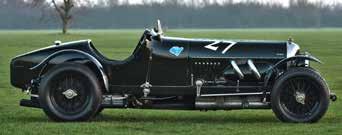
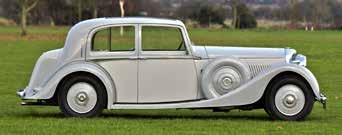 1963 Bentley S3 Standard Steel Saloon. £48,500.00
1957 Bentley S1 Continental Fastback £450,000.00
1955 Bentley R type Continental Fastback £860,000.00
1953 Bentley R Type Continental Fastback £700,000.00
1922 Bentley 3/5.3 Litre With Vdp Style Coachwork £350,000.00
1963 Bentley S3 Standard Steel Saloon. £48,500.00
1957 Bentley S1 Continental Fastback £450,000.00
1955 Bentley R type Continental Fastback £860,000.00
1953 Bentley R Type Continental Fastback £700,000.00
1922 Bentley 3/5.3 Litre With Vdp Style Coachwork £350,000.00
cars. Naturally, he was drawn to the fastest cars that raced on the Circuit and they clearly left a great impression on him as he passed on the stories of these meetings to me and my siblings on car journeys.
Dear Sir,
What a pleasant surprise and delight it was to see the Barnato-Hassan Special on the cover of the latest Bulletin when it arrived in the post. I always look forward to the magazine, but this edition made my month as I have very fond memories of this car thanks to my father, who watched it being raced in period.
He would regularly recount tales of Brooklands from when he visited as a young man keen on motorsport and sports

Allan Winn’s story brought back so many treasured memories of those drives, usually to see relatives who lived close to Brooklands. I must also congratulate Mr Winn for bringing to life so ably what it is like to drive the Barnato-Hassan Special. I know my father would have been fascinated to learn about the car’s handling, steering and performance on a banked circuit, even if it wasn’t Brooklands own track.
One thing that has stayed in my mind is my father’s description of the sounds this car made. He thought it was part of what made the car so quick and was a great believer in ‘if it sounds and looks right, it is right.’
Yours sincerely, Peter Wise
Dear Sir, I have been a Friend of Brooklands for over 25 years, which all started when I was lucky enough to be appointed as the Museum’s firm of General Insurance Brokers in about 1990. That gave me privileged access to the Museum before it was fully open.
Morag Barton was the Museum Director then and she asked me what I thought of holding an American Car Rally in the grounds. Morag was not to know then that I had always liked US cars from boyhood. You can easily guess my answer and that Rally took place, I think, in about 1993.
Soon after, I acquired a 1947 Packard Clipper and had the idea of holding the first all-Packard Rally in Britain and Brooklands seemed the natural choice in the spring of 1996. We had 18 Packards from 140 cars registered in the UK, so not a bad start.
What a delight to see Brooklands open again and I visited on the first weekend in August for no other reason than to have a look around. I am sure there are many Members like myself who frequently visit for a specific event or purpose and thereby miss a lot. Wandering round the site, I came across many items that aroused my curiosity, for example at the back of the aircraft park there is a large alloy fabricated piece with two circular tubes running through it. I later identified it with the help of one of the Concorde volunteers as part of the engine exit nozzles on the supersonic plane.
Having read Harry Sherrard’s article in the Sept-Oct Bulletin about the attack on Brooklands in September 1940, I wondered about a strange item where the top of the Finishing Straight meets the Members Banking. Here you will find a circular flat concrete plinth, around 15-metres in diameter. I wondered if this was the base for a gun emplacement during WW2 or does it serve some other purpose? Can anyone help?

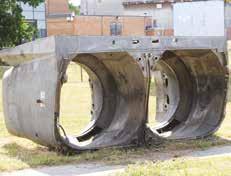
Kind regards,
Gareth TarrI later discovered that all Packards at one time were imported by Leonard Williams Ltd of Brentford and The Motor and The Autocar tested them at Brooklands. They are impressive cars, so it’s sad to think that none has been made since 1958, but the enthusiasm for the marque still lives on.
There was a second importer of Packards to Britain: WC Gaunt Co Ltd. Would any Bulletin readers be able to provide more information on either of these Packard importers?
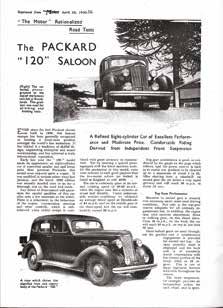 John Bath Chairman, Packard Automobile Club of Great Britain
John Bath Chairman, Packard Automobile Club of Great Britain
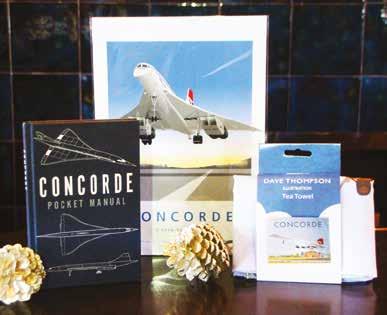




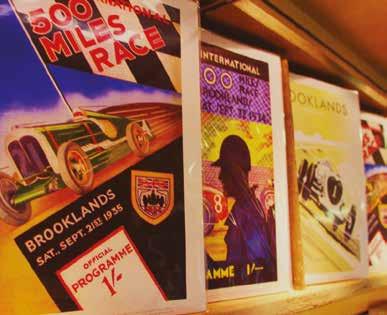
the Brooklands site? I’m sure a book could be made about the activities at Brooklands around that time, and one I’d surely buy.
Dear Sir, I always enjoy reading the Brooklands Bulletin but two articles in the JulyAugust 2020 issue particularly caught my attention. Firstly, Brooklands during WW2 has always fascinated me, having noticed the difference in concrete under the Members’ Bridge showing where a hangar had been dug into the banking, and seeing the Bofors tower and pill box.
The article ‘Brooklands and the Battle of Britain’ has some very interesting photographs of the hangars and camouflaging tactics using netting over the hangars and painting false hedgerows on the airfield. I wonder if there are any pictures of the Bofors tower and is there a map showing all of the buildings distributed about the site, on the track and what they were for? Was there only one Bofors gun emplacement for the whole of
A question I’ve also wondered for some time was also touched on in this article: were the Hawker Hurricanes actually manufactured at Brooklands or were they made at Hawker’s factory in Kingston and assembled at Brooklands? As a side note, I knew a stress man, John Smith, at my old workplace who used to make wing ribs for the Hurricane during the war.
Lastly, the large concrete block article on page 50 of the July-August issue showed it testing the undercarriage of the Valiant, but what testing? Looking at the archive picture, the belts around pulleys on the wheel hubs look like they were testing the wheel spin-up in reverse. So, instead of the ground rushing past the wheel and the wheel rapidly spinning up to speed on contact, the wheel is spun up to speed and then rapidly slowed on contact with the stationary block. I assume this rig tested the complete undercarriage assembly for dynamic reactions on impact, which would help avoid the infamous resonance issues suffered by the TSR-2 on landing. Keep up the great work.
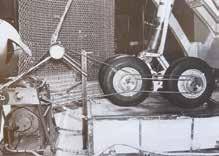
Best regards, Martin
CreberDear Sir,
Thank you for your wonderful collection of Museum from Home activities! We have spent a very happy afternoon making and colouring, and our children ages 6 and 9 are very proud of their efforts.

We were so delighted to come back to the Museum a few weeks ago. Thank you to the wonderful staff and volunteers for their warm welcome, and a safe and happy visit.
Best regards, Kate
WallThe Events List is subject to change, so please check the website: www.brooklandsmuseum.com. Email events@brooklandsmuseum.com or telephone the Museum on: 01932 857381 for information. Test Hill, car rides and engine runs are subject to operational conditions. Due to the Coronavirus situation, please check the website for the most up-to-date information on events. Thank you for your support.
October
21 Castle Combe Track Day for Cars. 9am-5pm. Revised date from 21 April. If you have already booked, you will be notified of your options. Put your car through its paces on one of the UK’s most exciting circuits. Check website for details.
26/28 Sewerage Cathedral coach visit. Angela Hume will be in touch with members who have booked in September or earlier if there is definite news.
December 15 ‘Wartime Kent’ Coach visit to Chartwell, family home of Winston Churchill. Guided tour of selected rooms plus a trip to Biggin Hill Memorial Museum and St Georges RAF Chapel of Remembrance.
2021 June 3-7 Jersey International Motoring Festival. Ticketholders will have been contacted for this new event to replace the cancelled 2020 one. There are now some vacancies for this scenic tour.

Due to restrictions on public gatherings, the Members’ Talks have been cancelled. However, the Talks team has moved presentations online through BM.tv and recorded 20 Zoom-based conversations so far with such notaries as Simon Taylor, Steve Parrish, David Tremayne, Richard Noble, Allan Winn and Maurice Hamilton. We have also been involved with seven book launches including, among others, titles about the Wellington Bomber, Niki Lauda and Jochen Rindt.
They can all be viewed now on our BM.tv channel which you will find at: vimeopro.com/brooklandsmembers/ bmtalksonline. You can also find a link on the BM.tv section of the Museum website under the heading of ZoomCasts.
We are aware that this form of technology is not to everyone’s taste, but during these challenging times it does provide us with a platform to keep the Talks alive and Members entertained and informed. As we come out of the current restrictions with the likelihood of smaller audiences in a venue, we will be able to stream to hundreds, not just 20 people in a room!
Steve Clarke and The Talks TeamWords: Roger Radnedge Photos: Brooklands Museum Collection
We pick up the story of Paddy Naismith in 1933 with her pushing her car through the Paddock area at Brooklands during the Whitsun meeting on 5 June. She had no luck on track that day and later in the same month she was reported as being about to carry out a ‘daring journey’. She was about to set off on an attempt to beat the Rome Express,
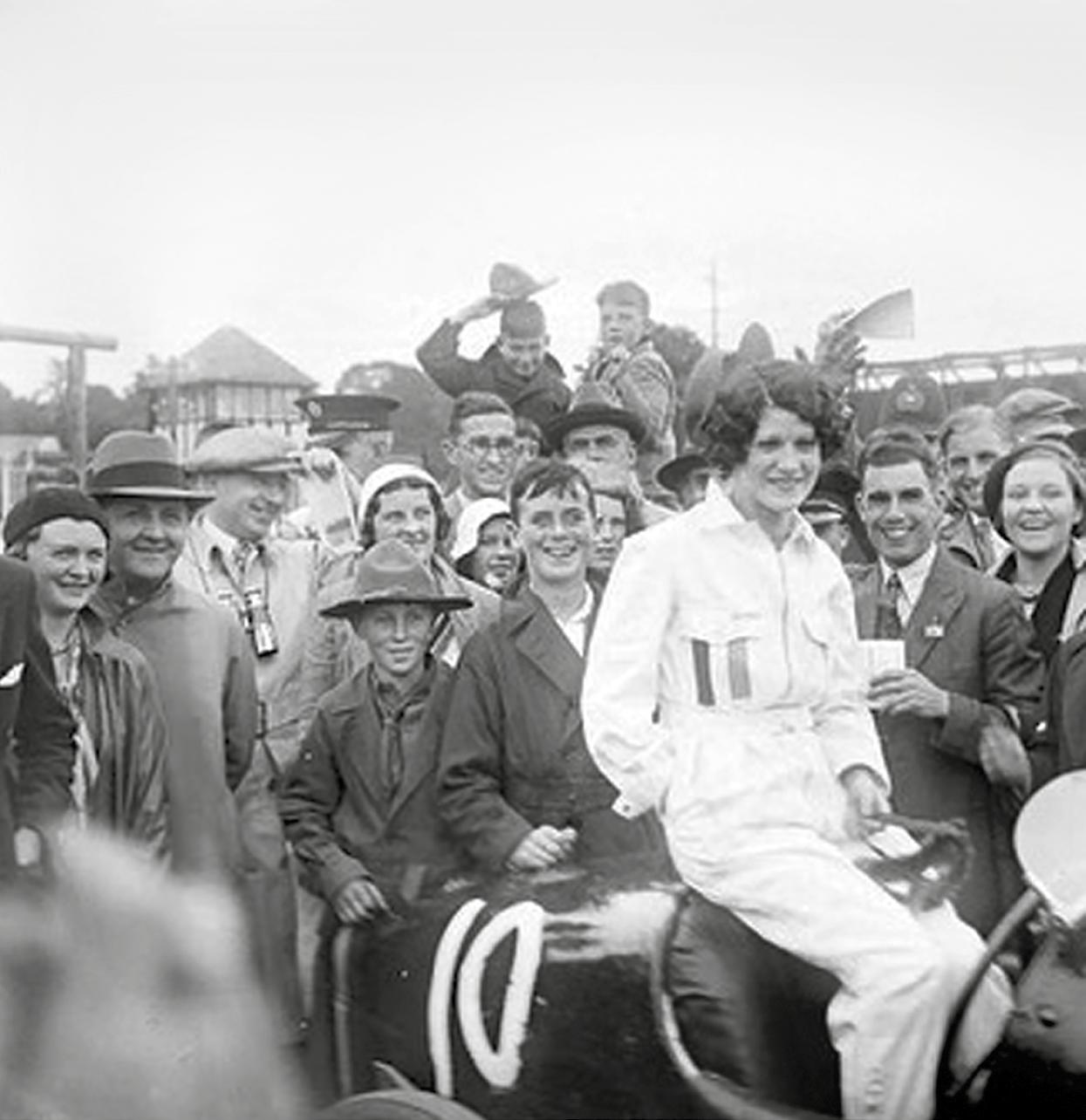
putting a letter on the train at Paris and aiming to be in Rome in time to collect it. Paddy did the whole journey alone, the car fitted with large fuel tanks to avoid refuelling stops. The train journey was 32 hours and she had to average more than 42mph to win. To make matters worse, Paddy’s route was harder than the train’s,
which could use tunnels through the mountains whereas she had to drive over them. Unfortunately, there is no record of what happened to this attempt.
However, such was Paddy’s fame that during the year an inventor called Mr LAC Davoran asked her to model his latest invention. This was a rather bizarre set of ‘rain goggles’. Each lens of the goggles was equipped with a small windscreen wiper
powered by a fan also mounted on the goggles and once a speed in excess of 15 mph was achieved the wipers would start clearing the goggles.
In July, she took part in the Kings Cup air race as a passenger in Sir Derwent Hall Caine’s Leopard Moth piloted by Captain AJ Styran, who was a pilot for British Air Navigation Company (BANCO) and also one of its directors. The pair came third. On the 9 September, 1933, Paddy gained her pilot’s licence (Certificate 11160) flying a Gypsy Moth, having been taught by the Airworks School of Flying at Heston. Using the opportunity, she appeared in an advert for ‘Phosferine’ in which she says: ‘I have just become the first film actress pilot in England, and as one must be 100 per cent fit to pass all the tests successfully. I am grateful for the way Phosferine has kept me continuously up to the mark.’
Following on from gaining her pilot’s licence, Paddy became Britain’s, and probably Europe’s, first air hostess when she joined BANCO on 23 March, 1934. She said: ‘I was fortunate enough to be the only girl with the necessary qualifications. They wanted someone who was a pilot and navigator, and had a good knowledge
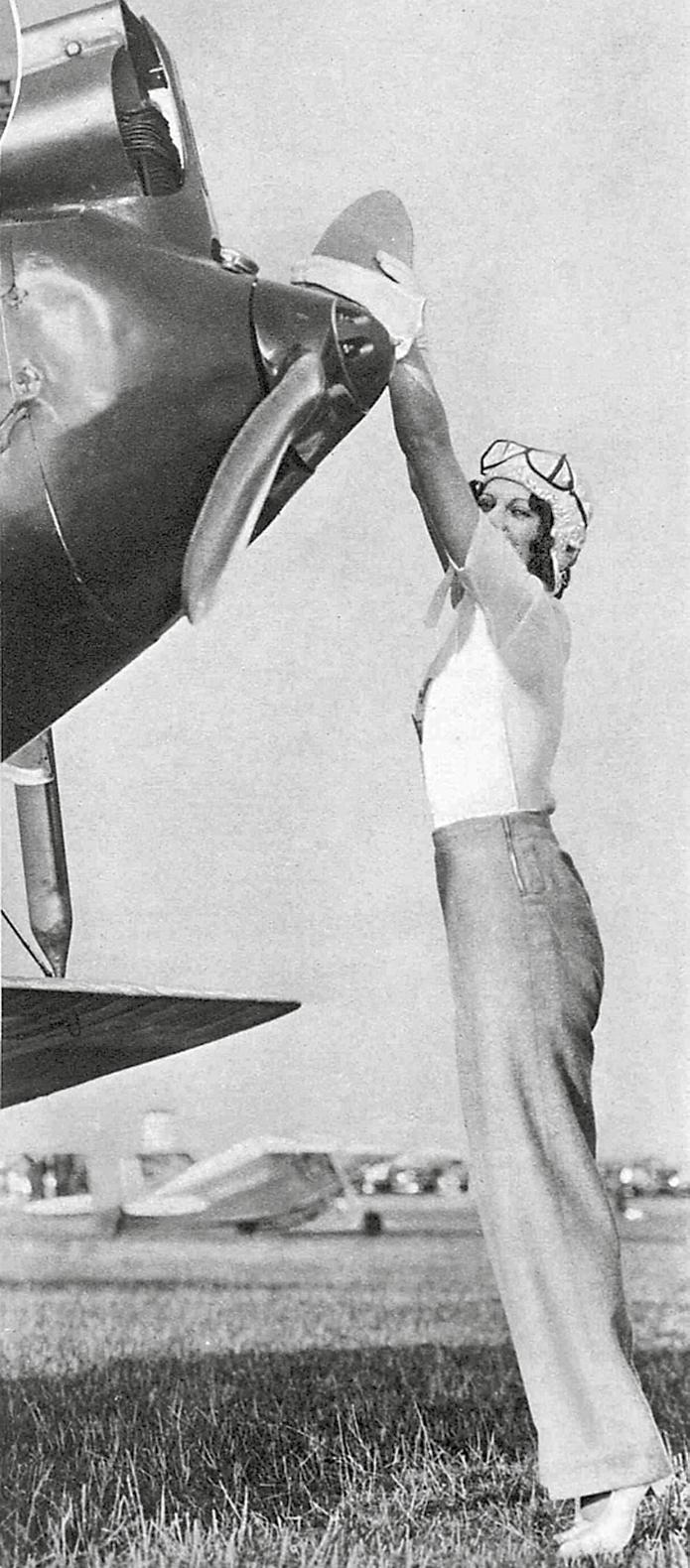
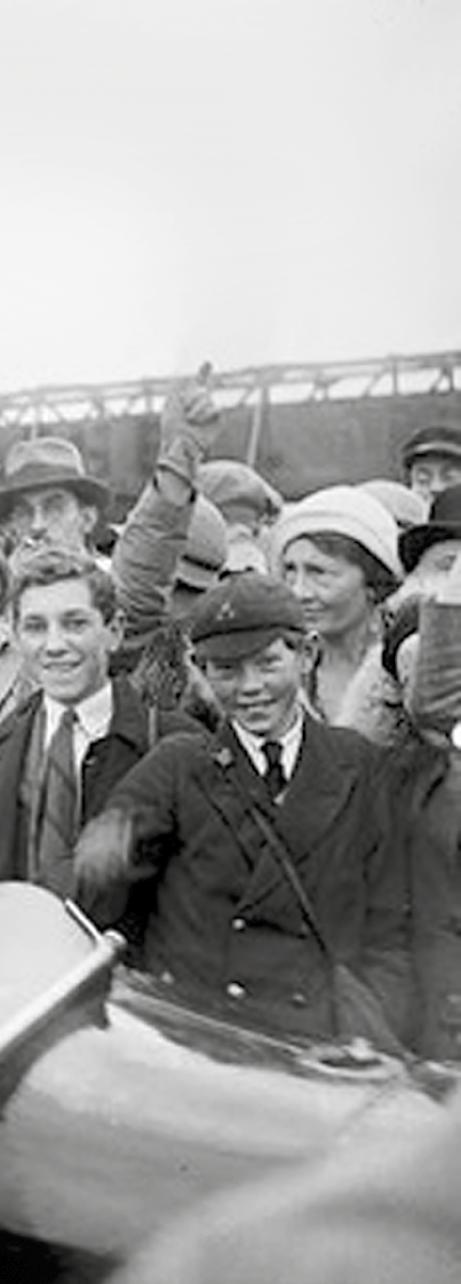
of the country the flights would be made over.’ BANCO was operating out of Heston and was a small airline that provided services to the Isle of Wight and the continent. It also provided charter services and one of these was to that year’s Grand National race. This was Paddy’s first job on the well-appointed Ford Trimotor. In the same month, she told the Australian newspaper The News that she intended to enter its centennial air race flying a DH Leopard Moth, probably hoping to use Hall Caine’s plane, with one of her sisters. However, this never happened, perhaps because she was unable to obtain sufficient backing or Hall Caine didn’t like the idea.
In July 1934, Paddy was racing again at Brooklands in the ‘Long Handicap’ in which she came third. She attended the Brooklands Autumn meeting in September, entering

the first Kingston Junior Long Handicap race in which she again came third in a supercharged Salmson that belonged to Sir Derwent Hall Caine. Unfortunately, during the race she and Fay Taylor disgraced themselves by driving over the safety lines at the Fork. The Brooklands Club took a dim view of this and fined Paddy £2, which is equivalent to £136 today. She was also excluded from the rest of the meeting and she never raced at Brooklands again.
However, Paddy’s life was about to take a turn for the better. In October that year, she flew in the London (Hatfield) to Cardiff air race with Lord Patrick Crichton Stuart as her navigator in a Blackburn B2 trainer. While there, she met a young RAF pilot called John Towers Mynors
Paddy’s acting career continued alongside her racing and flying. She appeared as Lady Frances’ Maid in The Iron Duke, though her credit was as ‘Paddie’ Naismith.
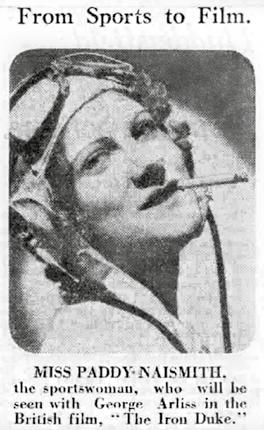
who would play a significant part in her future. As for the race, there were 15 competitors but three of them never made it to Cardiff, but Paddy and his lordship did, even though their total joint flying time was less than 100 hours.
The following year was a traumatic one for Paddy. At home with her mother in Muswell Hill, London on 1 August, they received a telephone call to say that her sister Shelia had been badly burnt and had been rushed to the Uxbridge hospital in a critical condition. Shelia had been taking part in the shooting of the film Things to come. On the second day of filming, she was sitting on the grass during a break with other actors smoking a cigarette when suddenly her dress caught fire. Those with
Always a professional when racing, Paddy did fall foul of the stewards at the Kingston Junior Long Handicap race in 1934 for driving over the safety lines at the Fork.her attempted to put out the fire and burnt themselves in the process. The fire was eventually extinguished when two men ran up with rugs and smothered the flames. By then Shelia had severe burns all over her body and some of her hair had caught fire. Shelia did survive but remained injured.
The following month, Paddy took part in the Kings Cup Air Race as a passenger and navigator to Captain WL Hope flying a Comper Swift, but she was back in action as transport manager to the National Party in November when a General Election was called. Paddy was in charge of 15,000 cars. Even so, that didn’t prevent her from opening the London Brook Street salon of fashionable hairdresser Mr Bernard.

More promotion work came Paddy’s way when the Ford Motor Company asked her to help publicise its new V8 model at the 1936 Olympia Motor Show. As part of this, she took part in ‘The Car Vanishing
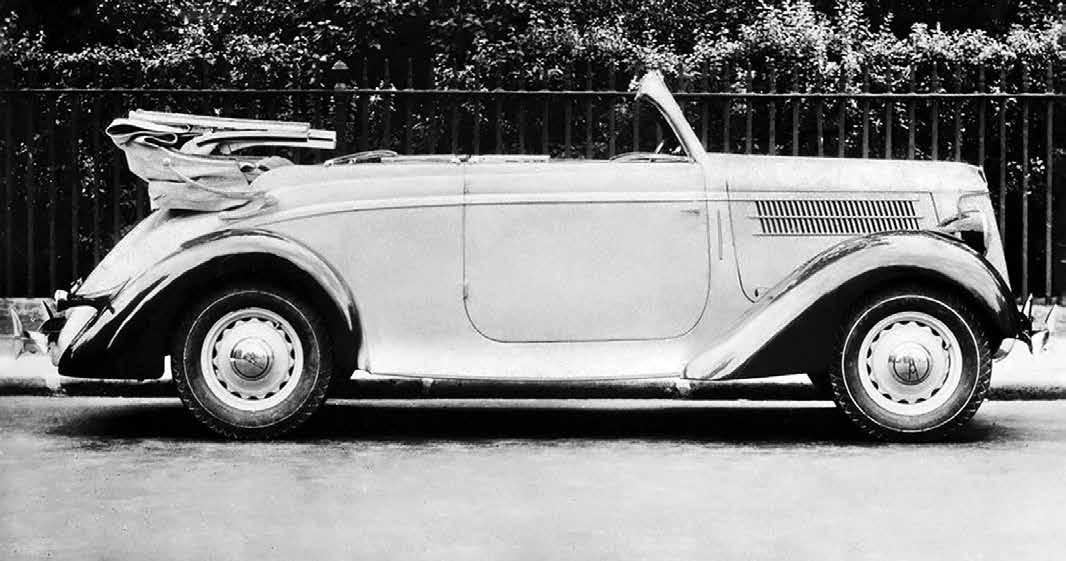
Demonstration’. For this, she stood on a raised platform alongside what appears to be a Ford V8. As the customer asks Paddy about its chassis, the bodywork of the car disappeared into a mist leaving only the chassis on the stage. How this was done was never disclosed.
The Kings Cup Air Race took place on 1 July, 1938 and Paddy was passenger and navigator to a Captain Morton who was flying Sir Derwent Hall Caine’s Double Eagle. During the race, he was often seen flying very low, causing wags to suggest that Paddy was navigating using the local signposts, though they still finished fifth and she was the only woman in the race.

It seems Paddy’s brother Desmond was also interested in aviation as she tells an Australian reporter that he has joined up with the Hungarian engineer Oszkár Asboth and created a helicopter. This craft had counter rotating propellers. In October,
Paddy said she would test a new 90mph helicopter and said: ‘It will be invaluable for military co-operation. The present auto-gyro can only hover; it cannot remain still in the air. Their helicopter can, so it will be useful for military photographs, for issuing orders, and maintenance of communications with land forces. Although Paddy’s assessment of the helicopter’s capabilities is quite prophetic, the craft was not viable because it had rigid propellers that made it unstable when moving forward or in strong side winds. Paddy never flew it.
When war broke out, Paddy tried to join the Women’s Auxiliary Air Force but was told she was too short. Instead, capitalising on her fame and success as a demonstrator, she was recruited by the Ministry of Food and sent to the USA on a 10-month lecture
tour of the National Air Guard. Upon her return in November 1940, she gathered around her a collection of notables and started organising the ‘Red Head Spitfire Fund’. One of these notables was Squadron Leader John Tower Mynors.

Perhaps to maintain her profile, Paddy became the first woman to be seen on colour television. This was in John Logie Baird’s laboratory, which sounds very grand but was in fact a converted stable. This happened on the 20 December, 1940 and this television system had a 600-line resolution compared to the 425 lines that black and white sets used. It is said Paddy got the job because her distinctive red hair would show up well on the screen.
Back in her Ministry of Food role in April 1941, she visited Broadstairs to open the Pierremont Restaurant. This was a grand name for a community meals centre working out of a school canteen. A standard meal was served to the dignitaries and during it Paddy entertained them with a talk on how the people of the USA were helping Britain. She finished by telling them
about her return journey home by the Pan Am Clipper airline service to Europe that included a five-day stopover in Lisbon. While there, she stayed in the same hotel as a number of Germans with Swiss passports. They asked if she was not afraid to be returning to England before the invasion, but Paddy said: ‘I told them that to invade in barges would shock the old school tie.’ We’re not sure what that meant, but it must
have raised a laugh and probably confused the Germans as well.
During May 1941, the Marquis of Donegal held a dance at the Market Hall in Redhill, Surrey in aid of the Red Head Spitfire Fund. It raised an estimated £30, or £1,500 in today’s money, and Paddy also signed a Pound note that would be auctioned later in aid of a local ‘Bomb Fund’.
In November that year, she secretly married Wing Commander John Towers Mynors at Caxton Hall Registry Office. Soon afterwards, he was posted to America on a ‘special mission’ in Washington. Paddy had recently passed a test to become a ferry pilot and, in April 1942, she left for California to undergo further training. Two years later, on 14 February, 1944 the couple returned to the UK aboard the RMS Rangitiki. Upon her return, Paddy got involved in the rehabilitation of wounded and disfigured servicemen and was referred to as a companion of the men in the Park Prewett Hospital, which carried out pioneering facial reconstructive surgery.
During March 1945, she and a navel surgeon were seen lobbying in the House of Common’s buttonholing MPs and the press to draw attention to the plight of these disfigured heroes. Paddy was particularly annoyed with the War Office as the Air Ministry and Admiralty paid their causalities full pay while undergoing treatment but the War Office discharged its soldiers after eight months. To add further insult, these soldiers were charged nine shillings from their pensions throughout their stay in the hospital. The unnamed naval surgeon was also angered that women like Paddy took these men around London to get them socialised again at their own expense and out of their own petrol ration.
On a happier note, Paddy gave birth to her daughter Mary in November 1945. However, Paddy died on 28 November, 1963 aged 51. Although she was living in Ferndown, Dorset by then, it was in St Mary’s Hospital, London that she died.
During my research I came upon Mrs Diana Patten, Paddy’s niece and daughter of her brother Desmond. In an article in the Kent Messenger, she mentioned that Paddy was connected with the founding of the Guinea Pig Club, which is made up of ex-RAF aircrew who underwent pioneering plastic surgery during World War 2 and an interest Diana has maintained.
Diana is also an aviator of note. She and her husband restored the Headcorn Aerodrome, previously known as RAF Lashenden or USAAF AAF- 410. Thanks to their efforts, it is still a very active airfield from which air displays are regularly held. It also houses the Lashenden Air Warfare Museum. Like her aunt, Diana was also keen on racing cars and in her youth also had red hair. She has written a book chronicling her exploits called Red Head in the Clouds, and her children are also enthusiastic pilots.
If any Bulletin reader can offer more information about Paddy Naismith, I would be delighted to hear from you.
Roger Radnedge
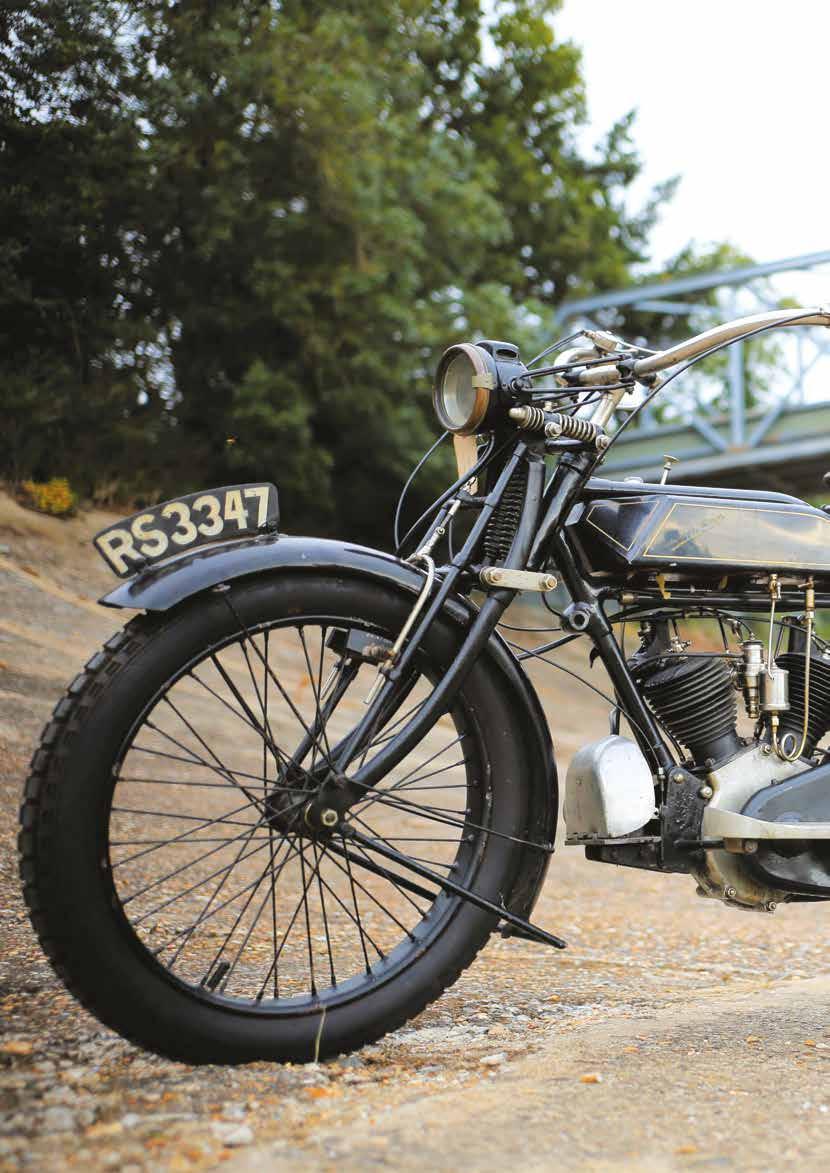 Words: Martin Gegg Photos: d73media/Martin Gegg
Words: Martin Gegg Photos: d73media/Martin Gegg
The 1920 Martinsyde-Newman motorcycle currently located in the Clubhouse is owned by the British Motorcycle Charitable Trust. This 680cc V-Twin machine is another exhibit that helps tell the story of collaboration and innovation of pioneering aviation engineers that turned to motorcycles to rescue them from the postwar slump. As we shall discover, embracing innovation and diversification was not always enough to stay in business.
In 1908, engineers Helmuth Paul Martin and George Handasyde formed a partnership after discovering a mutual interest in aviation. George was said to have been only the third owner of a motorcar in Britain, whilst Martin’s pioneering exploits included building an engine and fixing it to a bicycle before touring round Germany. Whether true or just part of their colourful self-promotion, their innovative partnership had soon produced the Martin and Handasyde Monoplane.. Another story has them building the aircraft in the Welsh Harp Ballroom in Hendon and hoisting it up to the roof while dances took place on the floor below. Whilst I would just love this to be true, the reality was that it was most likely built in a shed on or close to the Hendon Aerodrome.
Many references to the Monoplane say ‘This aircraft was not a success’. However, this is something of an understatement. The pair were keen to promote their aircraft and transported it to Halifax. Unfortunately, it was damaged in transit and the monoplane was destroyed after the tent in which it was being repaired blew down in a storm.
I was once told by Peter Jones, of Dragon’s Den fame, that the sign of a true entrepreneur is the ability to successfully continue after a set-back. Martin and Handasyde did recover and, moving to Brooklands in 1910, they formed the Martinsyde aircraft company. By 1914, they were listed in 3 July edition of Flight magazine as entrants in the London to Paris Air Race with a 120hp Austro-Daimlerpowered Monoplane. This aircraft never made the flight, but the Government was interested and Martinsyde quickly became a major supplier of aircraft during the First World War to the Royal Flying Corps, later to become the Royal Air Force. Now known as Martinsyde Ltd, the company moved to large premises on the site of the former Oriental Institute in Woking, in the area now occupied by the Lion Works and Lion Retail Park.
The company’s entry into the motorcycle market followed the inevitable slump in aircraft demand following the war. Martinsyde decided to target the
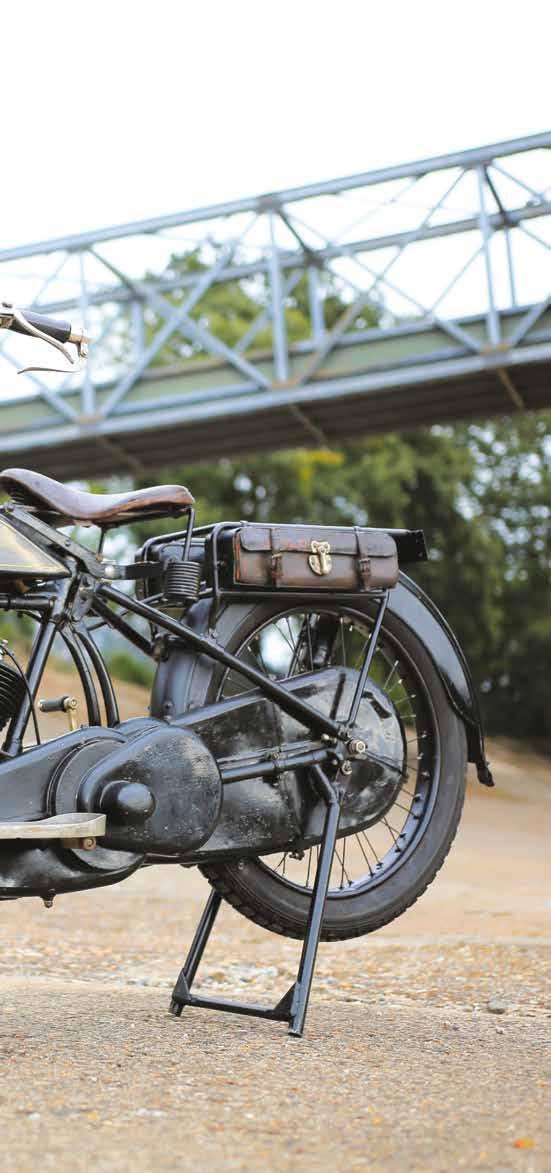


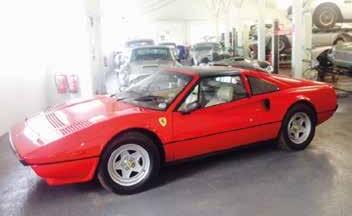


sidecar market, where they anticipated demand for a good quality machine might attract professionals. They collaborated with SA Newman Ltd of Ivy motorcycles based in Birmingham, who supplied the rights to engine designs by Howard Newman for £6000.
Newman was retained as a consultant and the first motorcycles, such as the Museum example, carried the MartinsydeNewman name. The gearbox was an AJS design for which they paid £1000 for the manufacturing rights, while the sidecar was designed by Martin. Writing in the 1970s, Titch Allen, founder of the Vintage Motorcycle Club, suggested that the early success of the motorcycles was due to brothers WH and LT Bashall and Harry Bowen. They were all pre-WW1 TT riders who developed the motorcycles further and were no doubt the force behind Martinsyde’s Six-Days Trial win and a team award in the 1922 Brooklands 500-mile Race. Riding a Martinsyde, Bowen also set two one-hour records at Brooklands in November 1921.
The company produced 2000 motorcycles in a range that included the 680cc V-Twin and a 500cc model in 1920, followed by a 350cc sports version in 1921. In 1922, Martinsyde produced the ‘Quick


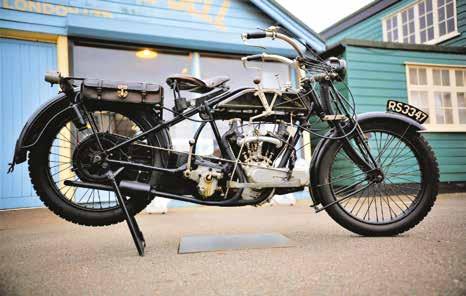
Six’, a 730cc sports V-twin which was capable of 80 mph. The Martinsyde register estimates that just 30 original motorcycles from the company now survive. In 2008, a Quick Six was sold by Bonhams for £28,750 including premium.
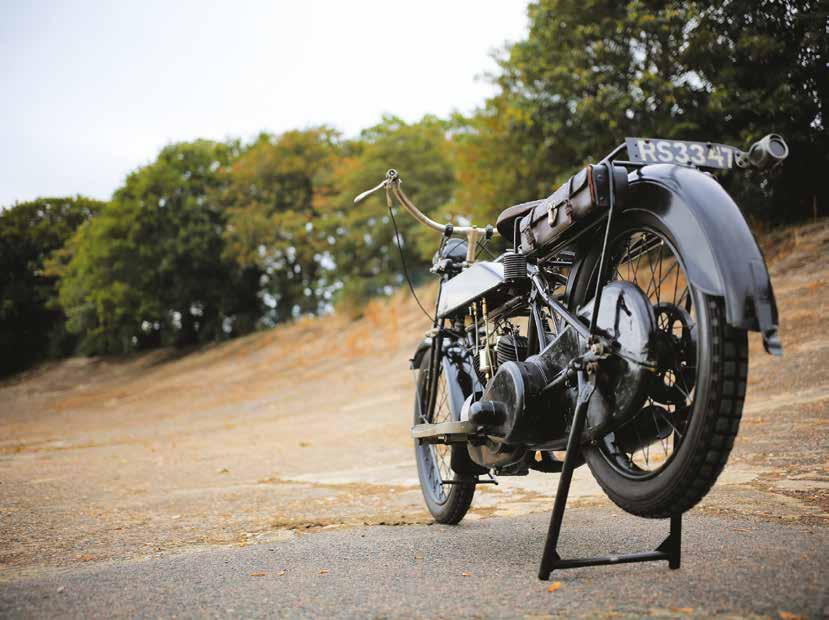
The company reverted to the Martinsyde name for its later motorcycles, and the last machine was sold in 1923 as the company went into liquidation following a fire that destroyed the factory

in 1922. The motorcycle-related assets were purchased by the BAT company, which produced two BAT-Martinsyde motorcycles until they too went into liquidation in 1925.
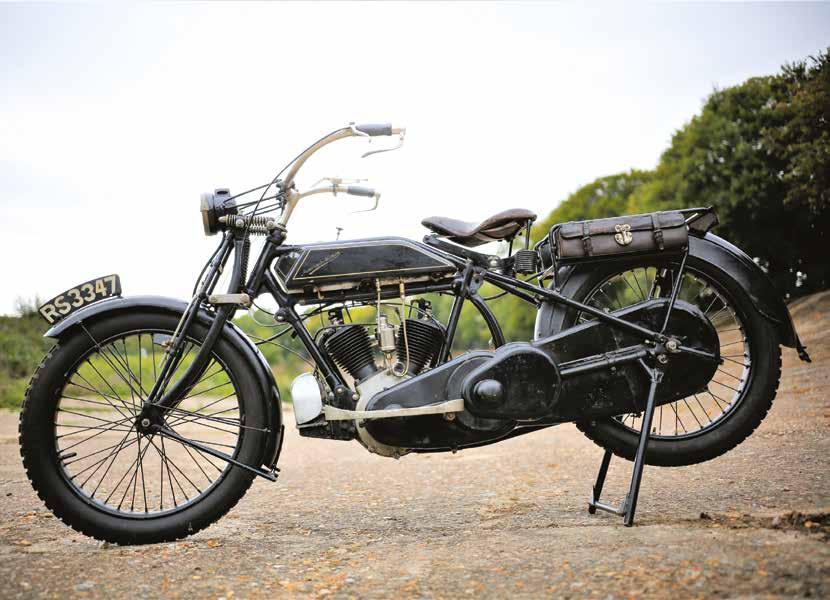
As with the majority of the Museum’s Motorcycle collection, the MartinsydeNewman does run. The Motorcycle Team are hoping to prepare it to take part in a future Banbury Run, but sadly this has not yet been possible, so we are unable to report on how it performs on the road. However, thanks to the Vintage Motor Cycle Club’s Vintage Journal we we have an extract of Titch Allen’s test ride of a 680cc V-Twin from the 1970s.
He wrote: ‘On the move the engine is delightfully smooth and silky running. Compared to contemporary singles and other V-Twins, it is a much more pleasant unit. At about 25mph the little twin got into its stride, making a delightful gobbling noise like an angry turkey. Further up the scale the gobbling turned into a muted roar at about 55-60mph.’
For now, the Museum’s MartinsydeNewman will not be able to stretch its legs, but it deserves a second glance as we remind ourselves of those have-a-go heroes Martinsyde and Newman.
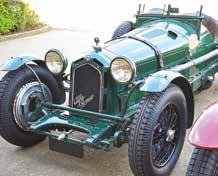

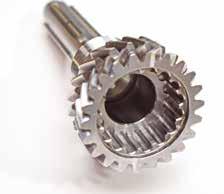
Janet Gulland worked in the aeronautical industry for her entire career. The Museum has recently been gifted a collection of documents and photos of this pioneering woman engineer.

The Brooklands Museum has been very fortunate to have been given an important collection of documents and photographs recording the career of one of the aviation industry’s few mid20th century women engineers. It must have taken great commitment and even courage to not only enter into the almost totally male-dominated world of the Vickers-Armstrongs’ Apprentice Training School, but then to advance to a career in engineering in the same field of industry.
Janet Mary Gulland took some of her first steps on this path when she won a Fulbright Scholarship as a research assistant in engineering at the Brown University, Rhode Island, USA in April 1956 while at Oxford University and was awarded a certificate in Research Assistantship for 1956-1957, working in the Wind Tunnel Department. Then, between 1958 and 1960, she was taken on as a graduate apprentice at VickersArmstrongs (Supermarine) at South Marston, Wisley Airfield and Weybridge. One year was divided between the Apprentice Training School and the shop floor, and another in various technical departments. When she applied for membership of the Royal Aeronautical Society in May 1958, she was regarded by the Vickers Engineering Laboratory as perhaps the best woman graduate they had encountered since the war and was elected a Graduate to the Society on 31 July, 1958.
On completing her apprenticeship, Janet took up a position in Vickers-Armstrongs’ Aerodynamics Department, her work involving wind tunnel studies on VC10 and VC11 rear mounted engines. The following four years were spent as an Operational Researcher at British Aircraft Corporation’s (BAC) TSR-2 Office at Weybridge, monitoring the performance of the TSR2 and providing technical support and marketing intelligence to the sales team.
From 1965 to 1976, Janet worked in the Military Aircraft Office at Weybridge as a Sales Engineer providing sales support on the Jaguar to the SEPECAT (Société Européenne de Production de l’avion Ecole de Combat et d’Appui Tactique) sales team. She developed a market research and information service directed at Jaguar, and later Tornado, marketing. In February 1968, she was elected an Associate Fellow of the Royal Aeronautical Society.
Janet’s career continued to be varied and accomplished and by 1976 she had progressed to the position of
Research Engineer in the Group Research Department at BAC headquarters at Weybridge. She became part of a team coordinating and monitoring research work throughout the newly formed British Aerospace (BAe) company following nationalisation. Between 1979 and 1982, she took on new responsibilities in the Corporate Planning Department for overall market research and forecasts and was involved in the provision of management services to the board.
The next 10 years saw the height of Janet’s career in the industry. She worked in management in market intelligence and planning in the Aircraft Group Marketing Department at Kingston, where she led a team of six military aircraft market analysts and coordinated market research on military derivatives of commercial aircraft. Janet was also Director of Market Research, with a team of 13 analysts, intelligence officers and forecasters for all BAe defence products. Based either at Weybridge or Kingston, this work involved Janet in EEC (European Economic Community) initiatives for the promotion of the European aerospace industry and
making major inputs into new projects in aviation.
In 1994, Janet was proposed for Fellowship of the Royal Aeronautical Society by Sir George Edwards, supported by Sir Peter Masefield and was elected a Fellow in October the same year. Retirement did not end her enthusiasm for the industry or for keeping in touch with her former colleagues. She also continued as a committed supporter of Brooklands Museum through its Friends organisation, as she had since the founding of the Museum Trust in 1987.
The fascinating collection that has been gifted to the Museum includes a broad range of material reflecting the career path of a trained engineer at a high management level. It also brings to light the personal interests and social activities that Janet engaged in with friends and colleagues.

There is a wealth of correspondence, inter-departmental memos, reports on conferences, illustrated reports and market forecasts. There are souvenir programmes and brochures recording the many events she would have been involved in or attended as part of her marketing activities, such as for the presentation of the Queen’s Award for Export Achievement to BAe in October 1983, complete with an invitation card to the event and a guest list. There are certificates to mark the first solo flight in an Anglo-French Jaguar and official programmes for air shows and flying displays at venues including Farnborough, Wisley, Dunsfold, South Marston and Paris dating back to the 1950s. Two of these are for the Fête Aérienne Internationale Aéroport de Paris-Le Bourget on the 7-8 June, 1969.
One of the values of this archive is its insight into the too often overlooked history of women in aviation. Here is a record, kept by Janet, of any progress made in encouraging women into engineering, which includes newspaper articles, women in engineering seminar brochures, a 1980s pamphlet on the subject and even a brochure on a film about women in engineering called What’s a girl like you…? Janet also kept the programmes for the World Premier of 633 Squadron at Leicester Square on 4 June, 1964 and the world premiere of The Colditz Story at the Gaumont Theatre, Haymarket on the 27 January, 1955.
Other documents record the wellknown names in aviation history that Janet’s career coincided with, such as the menu and list of guests at the retirement

of Spitfire test pilot, Jeffery Quill, on 22 February, 1979. It is signed by guests on the front and inside including Jeffrey Quill, Frederick Page and Handel Davies. There is also the Order of Service for the life of Arthur Gibson, 1926-1992, at St Clement Danes Church on 11 March, 1992, and a published biography of Sir Frederick Page by Ivan Yates attached to a typed letter to Janet from the author.
The many photographs that Janet collected similarly record her colleagues in the aviation industry spanning many years of the 20th century. They include George Edwards, Peter Masefield, Jeffrey Quill with his Spitfire, ‘Dizzy’ Addicott with the replica Vimy, and Norman ‘Spud’ Boorer

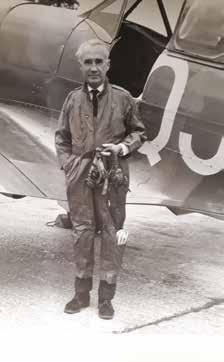
to name a few. The photographs also record the aircraft and projects Janet was involved with, many of which have become significant milestones in aviation history. They encompass the Jaguar and SEPECAT Jaguar, Tornado, Hawk, Concorde, the 1969 Vimy replica, a Super Guppy being loaded with an Airbus fuselage, the launch of the Sea Harrier, and the London to New Zealand BEA race team. The collection includes boxes of slides for illustrating lectures on TSR-2, Mirage, Jaguar, and the Schneider Trophy.

There are performance charts, plan drawings, cutaways and diagrams accompanying the press and market research reports, inter-departmental memos, letters and staff training notes. Also included are four superb illustrations in full colour gouache by the renowned aviation artist Arthur Sturgess. They are ‘1949 first flights’ showing the Comet and Canberra, ‘1969 first flights’ showing Concorde and Boeing 747, and ‘1979’
Always keen to promote women in engineering, Janet kept a copy of this brochure for the film What’s a girl like you… ?

showing Enterprise, Gossamer Albatross, Stratocruiser and Super Guppy in flight. There is a collection of commemorative first day covers too celebrating anniversaries of historic flights from the Vimy, Spitfire and Lancaster, to the Viking prototype, OneEleven, and the Hawk.
Three dimensional objects in the collection reflect Janet’s career, such as models of a Panavia Tornado and a Jaguar, both in green camouflage, and a TSR-2 in RAF livery. There is an eclectic range of marketing souvenirs including Harrier cufflinks, Jaguar notepads, penknives, a cigarette lighter and tie. Her Automobile Club of Rhode Island Car badge, in pressed alloy, showing the monogram of the Automobile Association of America, has also survived, as has a souvenir teddy in RAF Red Arrows aerobatic flying suite with the BAe logo on its back!


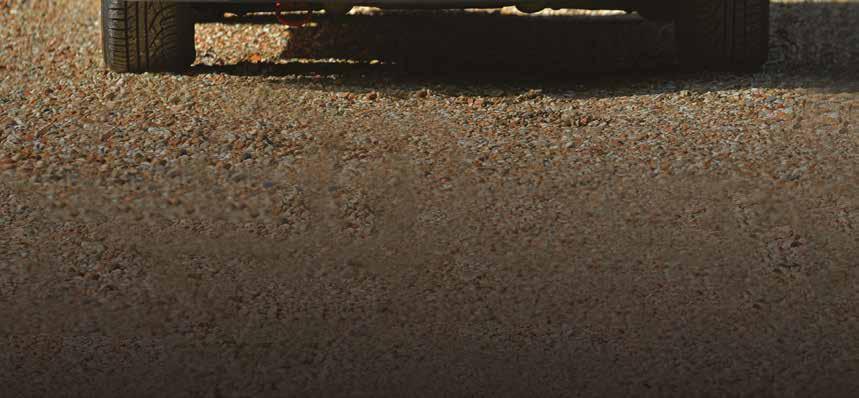


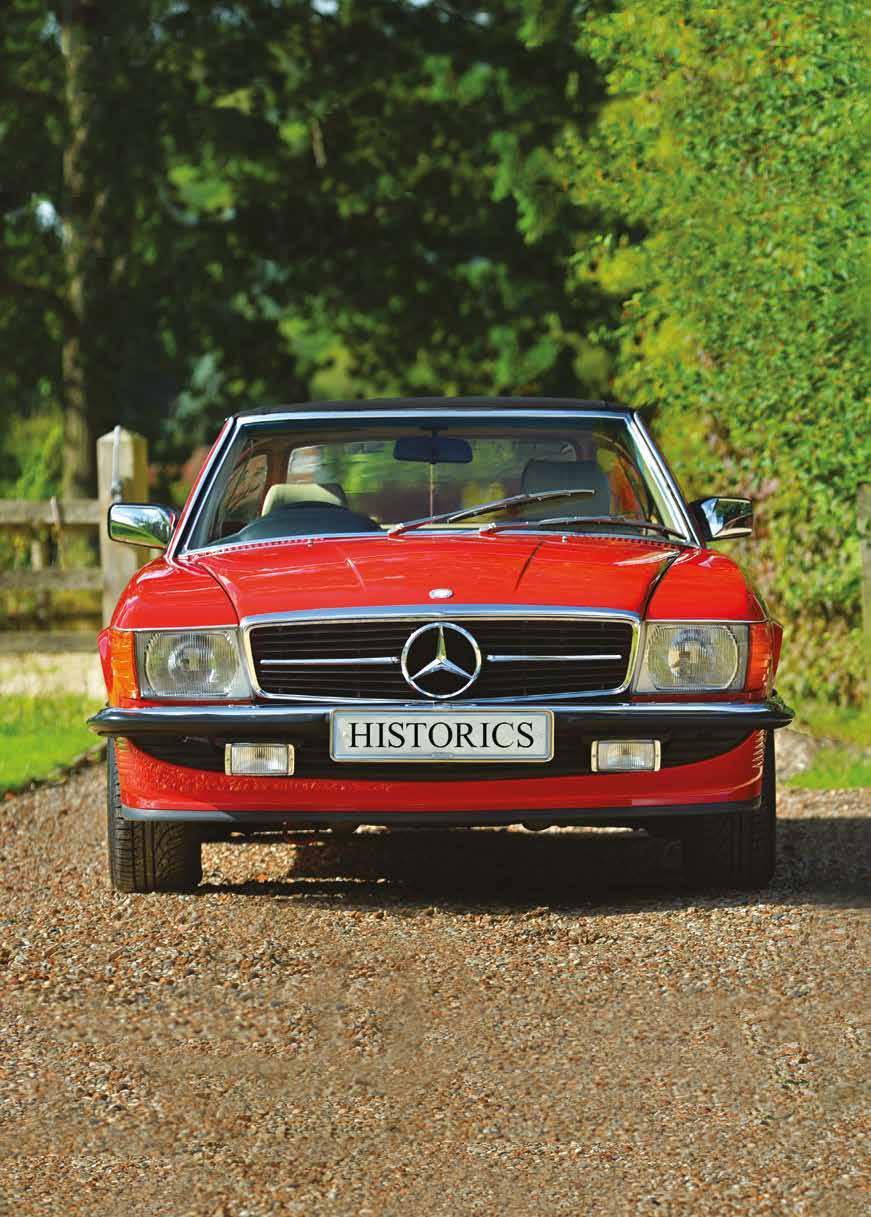
Bristling with all of 13bhp, it might seem optimistic to say the Fiat 500 race roared around Brooklands at the 1938 Easter Meeting. Yet it was won with an average speed of 42.45mph by Stephen Mond when the baby Italian car had a flatout top speed of 53mph. Mond, better know for driving an Autovia V8-powered Bentley special, would have to be driving the Fiat very hard to achieve this average during the two-lap event on the Campbell
Circuit. Perhaps even more impressive from the 569cc machine was a fastest lap of 44.45mph during the race.
It’s not clear who mooted the idea of a single-model race for the Fiat 500, but there was no shortage of well-known drivers keen to take part. As well as Mond, Gerald Sumner, Arthur Baron, Dr Beaver, JC Elwes, VL Seyd and Hugh Hunter were among those to get behind the wheel of the diminutive two-seat coupes for the start. Only WE Tubb, who was entered

in the race programme for the meeting, failed to take the start.
Writing in the November 1995 issue of Motor Sport, Bill Boddy stated: ’15 were mustered (18 had entered).’ However, the contemporary report in Motor Sport says Tubb was the only driver not to start and the programme shows 18 entrants listed. The numbering goes up to 19, but there is no entry for number 13 due to superstition. That May 1938 report commented: ‘Only WE Tubb failed to face
The 1938 Easter Meeting at Brooklands witnessed a unique race when a grid of tiny Fiat 500 Topolinos lined up with some notable drivers.Words: Alisdair Suttie Photos: Brooklands Museum Collection/James Thorne Fiat introduced the 500 ‘Topolino’ in 1936 with a 569cc engine and four-speed synchronised gearbox. Its good handling and strong hydraulic brakes made it popular with keen drivers.
the starter, leaving a most variegated field of seventeen. Sumner, Peter Aitken, Peter Clark, Arthur Baron, Andrew Leitch, Dr Beaver, JC Elves ( sic ), Hunter and Seyd were amongst the intrepid “dicers”.’
Unfortunately, other than referring to the drivers as ‘dicers’ and the winning average speed, the race report doesn’t go into any details of the race. It seems the ‘F.I.A.T Race’ was considered a novelty bookended by the Campbell Trophy Race before and the Third Easter Road Handicap afterwards. Even so, Motor Sport’s reporter went on to say: ‘The speed is notable, no one blew up and the cars finished fairly compactly. Curious that speed-kings stayed in the background!’ There was
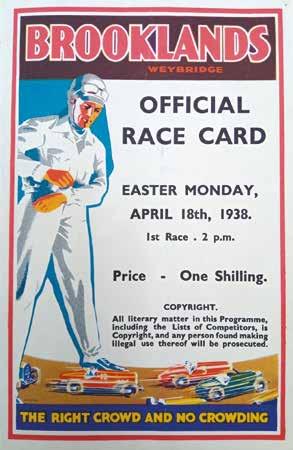
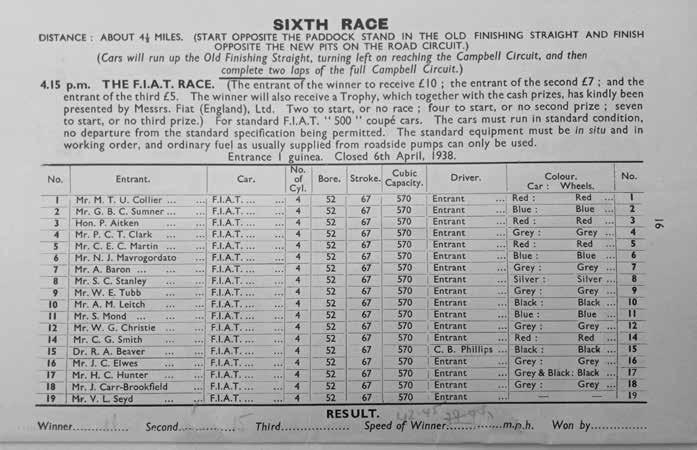
also some room for levity in the report when the writer concluded: ‘We wonder whether McConnell took Mond’s car to bits afterwards for scrutineering purposes, and whether he has any nuts left over!’ Brooklands Chief Scrutineer Hugh McConnell no doubt had more important matters to attend to at this meeting.
All of the Fiat 500s entered for this race were standard and there’s no question of any advantage being sought or gained. There were plenty of tuning options available for the baby Fiat by this point as it had already competed in the Le Mans 24 Hours race in 1937, and it would line up again at La Sarthe shortly after the Brooklands one-off race as well as competing there in 1939. The 500 had also proven its reliability on home turf in the Mille Miglia, so it could hold its own in a sporting environment.

These successes go some way to explaining why several of the biggest names from Brooklands racing kept a Fiat 500 as their town car. Among them were Prince Bira, Earl Howe and Richard ‘Dick’ Seaman who recognised the talents of this little car. While the Austin 7 remained the dominant small car in Britain, the Fiat 500 was a much more expensive option. This was because of McKenna duties, which were introduced by then Chancellor of the Exchequer Reginald McKenna in 1915. Set at a stinging 33.3 per cent, McKenna duty was levied on any imported luxury goods, including cars, to help fund the First World War and subsequently pay off the debts incurred by the government. Ramsay McDonald’s government very briefly did away with this tax in 1924, only for it to be re-imposed in 1925.
As a result, the Fiat 500 had to appeal to buyers on other fronts than value for money. It did this with its nimble handling that made the standard Austin 7 feel like the ageing design it was. Bill Boddy remembered his first impressions of the Fiat 500: ‘It seemed an odd little animal on the show stand at Olympia. But driving it proved that it had safe road-holding, good ride and willing performance. Hydraulic brakes and independent front suspension helped to that end, and there was a synchro four-speed gearbox. It wasn’t long before the tiny Fiat was the “in thing” for keen drivers to be seen in.’
All of this underlines why the Fiat 500 found favour with racing drivers of such repute and maybe why the one-off race made its appearance at Brooklands at the 1938 Easter Meeting.
A souvenir programme was given to all of the passengers on the 40th Anniversary Flight to mark the Vickers Viscount making the first turbine-powered journey with paying passengers.

Words and Photos: Robin Cordery
People often think of the first turbine flight for passengers being made by the De Havilland Comet in 1952. It did, in fact, take place on 29 July, 1950 when Vickers prototype Viscount 630 G-AHRF, with Captain Wakelin in command and supported by Captain Mitchell as second pilot and Captain Rymer acting as navigator, flew service number 329 on a British European Airways (BEA) scheduled flight from London to Paris. A Vickers Viking would take 1 hour 20 minutes for this 240-mile journey, but the BEA ‘Discovery’ Class Viscount would reduce this to less than an hour. Together with 12 fare-paying customers, the flight carried 10 special passengers. They included Sir Frank Whittle, the man credited with designing the Viscount, Sir George Edwards and BEA’s chairman Anthony Milward.
To celebrate this milestone in aviation and to raise funds for the restoration of Brooklands Museum’s recently acquired Viscount 806, British Air Ferries (BAF) and The Friends of Stephen Piercey recreated
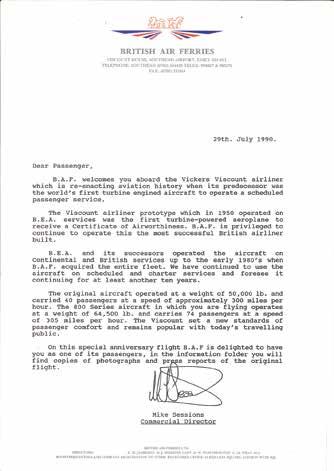
this historic flight in 1990. Permission was kindly granted for the flight to depart from RAF Northolt, using the original London aerodrome. In France, the passengers would disembark at the same terminal used 40 years previously. Paris Le Bourget had by now been transformed into a celebrated air and space museum, and venue for the Paris Air Show.
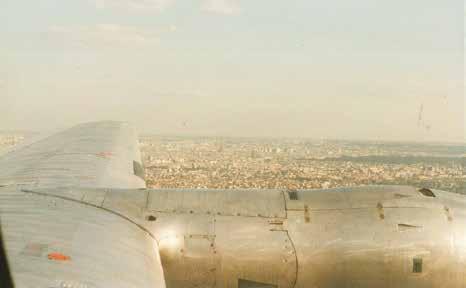
I was lucky enough to be invited along on a sunny morning 40 years to the day after that famous first turbine flight as a passenger on flight VF329 in a beautifully presented late 1950s BAF Vickers Viscount 806. The airline might have changed and it was a later model of Viscount to the original, but the sense of excitement and nostalgia added to the feeling of stepping back to an earlier age.
It was a beautiful morning as we arrived at Brooklands’ Art Deco
control tower to catch the green ex-London Transport ‘Low-bridge’ double-decker bus to Northolt. Appropriately, the route indicator stated ‘Route 462 Weybridge BAC Works’. This immaculate bus, complete with BEA’s ‘Europe’s Foremost Airline’ advertising, took us on a tour of the former British European Airways maintenance facility at Heathrow used by Viscounts from the 1950s up to the 1980s. These buses were specially designed and built to pass under the low railway bridge in Chertsey





Lane at Staines, which at 13ft 6in was too low for a standard height double-decker.
Our regal arrival at a peaceful Northolt allowed plenty of time to enjoy the original terminal facilities. On display was the Northolt Story Board 1915-86, which included memorable events in the base’s history, including the very flight we were here to remember. A short stroll up the aircraft steps in glorious sunshine seemed all too different to Heathrow’s queues and enclosed air bridges. Entering the aircraft, we were immediately transported to a more sedate and glamorous way to travel with large oval windows complete with curtains, netting luggage racks, and comfortable seats. The only onboard entertainment was the delightful BAF Taking Off inflight magazine.
We were soon ready for a leisurely departure, scheduled for 10am. The flight was incredibly smooth and was accompanied by the reassuring whine of the four Rolls-Royce Dart engines. After an initial climb in clear sunny skies, we followed the Thames and headed for the Viscount’s Surrey birthplace at Brooklands. The Sultan of Oman’s VC10 could be seen clearly, as could the former and now disjointed banking of the track. The distinctive Clubhouse and former runway were easily recognisable and, if you knew your airfields, so was the nearby former Vickers test facility at Wisley with its long runway.
Having experienced a panoramic view of France’s capital, we gracefully touch downed at Paris Le Bourget in what seemed like no time at all. Without any other traffic, the aircraft blended in comfortably with the other exhibits at the Musée de l’Air et de l’Espace.

Within minutes of arriving, we were in the museum itself and there weren’t any noticeable passport, immigration or security checks, still commonplace back in 1990. In fact, I managed to get slightly lost and opened a nearby door to find myself standing on a French street outside a café. It was like being in the 1970s children’s TV series Mr Benn and, like him, I had to find a hidden entrance to get back in.
I was glad that I did, as we had full access to a near empty museum and its stunning aerospace exhibits. Among the dusty Spitfire, early jet fighters and WW1 aircraft was the gondola of a Zeppelin airship. A peak inside at this Jules Verneinspired control nacelle allowed a view of the myriad gauges and control equipment, not to mention the large defensive machine gun pointing through the gun port, ready for action.
I was struck by the apparent crudeness of the former Soviet space craft on display, including an agricultural looking space capsule with heavy duty release handles and containing a bewildering array of levers and gauges. The cosmonauts were supplied with a plastic globe, presumably to aid navigation, together with a pencil and notebook.

Back outside in the Paris afternoon sunshine, the first Concorde, prototype 01 WTSS, was open to view. Sadly, moisture had built up inside this French-built aircraft, making It difficult to see out of the windows. Unlike Duxford or Yeovilton’s examples, at the time it looked in desperate need of the restoration that thankfully it later received.
The museum’s towering Ariane satellite launch vehicle seemed to get larger on approaching the rocket, while the former
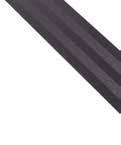
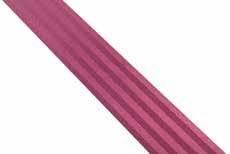


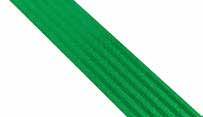








Robin’s ticket for the 40th Anniversary Flight, which had special permission from the RAF to depart and return to Northolt where the original flight took off from.
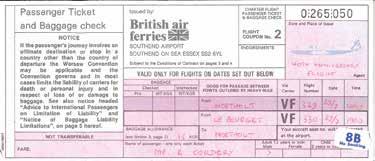
presidential Sud Aviation Caravelle airliner was a unique addition, and looked as if it had plenty of exciting stories to tell. Other French types on display were a prototype Alpha Jet, Dassault Falcon and a 1950s Nord Noratlas military transport. Standing proudly in front of the museum, and mounted facing upwards in a striking fan shape pattern, were former aircraft of France’s equivalent of the British Red Arrows, the Patrouille de France.
While taking in all of this, an eye on the slowly growing activity surrounding
our own flying museum exhibit meant that sadly our Paris trip was coming to an end. While earlier enjoying an al fresco glass of red wine and delicious local food, I had noticed our flight crew in the shop across the road purchasing large quantities of orange juice, ice cream and other provisions. As we took our seats for the return flight, we soon realised why. There had been a technical problem which meant that onboard supplies for the return trip arrived in carrier bags rather than the usual aircraft catering trucks!
Before take-off, I was invited onto the flight deck and I realised how claustrophobic and dated, or as the crew termed it ‘cosy and quaint’, the cockpit
looked compared to the Boeings and Airbuses usually found on this busy route. As we taxied away from the runway, it felt as if we were trying to make our escape in one of the museum’s exhibits taking in a gentle circuit around the Eiffel Tower.
An uneventful trip followed back to Northolt, where British Air Ferries very kindly presented each passenger with an information folder, containing copies of photographs and press reports covering the original 1950 flight.
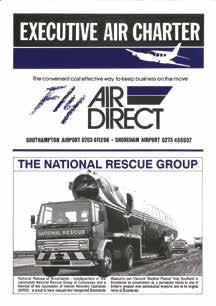
Also included were details of Vickers Viscount 806 G-APIM, which had been named Viscount Stephen Piercey in 1984. The late Stephen Piercey had lived in Addlestone, close to Brooklands. He had been an accomplished photographer and founder of Propliner magazine. Tragically, he was killed aged 26 in an air crash at the Hanover Air Show on 20 May, 1984. His parents Patsy and Captain Ray Piercey were on board our flight.
Funds raised from the London to Paris 40th Commemorative Flight would be used to help restore Viscount G-APIM. Sadly no longer airworthy, G-APIM first took to the skies on 4 June, 1958 from Brooklands. Officially named ‘Robert Boyle’, she was delivered to British European Airways on 23 June, serving with BEA and later British Airways until 1982.
She was then purchased second-hand by Southend-based British Air Ferries (BAF) and flown by them from 1984 until 11 January, 1988 as G-APIM was declared an insurance write off when a Shorts 330 taxied into her at Southend Airport. The aircraft was then offered on loan to Brooklands in 1989 and was dismantled by Proteus Aero Services Ltd later that year. The damaged fuselage was delivered by the Brooklands-based National Rescue Group on Sunday 11 February, 1990 via the Dartford Tunnel.

The Viscount was painstakingly restored, having been joined by its

severed wings and a huge array of additional components. The damaged

fuselage and cockpit required considerable attention at both Southend and Brooklands due to the collision with the Shorts 330. Unfortunately no longer with us, local resident and former Vickers and BAC test pilot Gabe ‘Jock’ Bryce could be found helping out with G-APIM’s restoration. The aircraft stands proudly on show at the Brooklands Museum, resplendent in British Air Ferries’ 1980s colours and can be visited by members of the public. The aircraft contains much of her original interior, together with a display of Viscount artefacts and mementoes.
As for the Viscount we travelled in for the 40th anniversary flight, G-AOYN (construction number 263) was delivered in 1958 and in service with BEA and BA until 1980. BAF operated her from February 1981 until February 1997 when she was broken up. Having been re-registered as G-OPAS for use as a Parcelforce freighter in October 1994, her cockpit is still extant at the Bournemouth Aviation Museum.
As the UK’s number 1 tobacco company1 we are recognised by our globally renowned brands
Behind their success is a company whose own corporate brand is lived everyday through the actions and behaviours of our employees Our UK head o ce is based in Weybridge, Surrey.
jti.com/uk


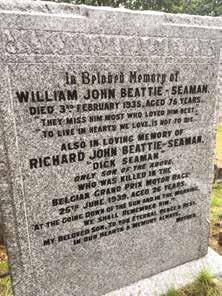

Over the years, as memories of Seaman’s exploits gently faded, his grave slowly fell into some disrepair. Those racing fans that remembered, and who went to row M99 to pay their respects, wrote to me from time to time over the last 20 years asking why the company had let it get into such a state. The truth is, it was always a Beattie-Seaman family plot and not maintained by Mercedes-Benz. However, since the family line ended, it was not tended to by anyone officially.
I’m delighted to report that has now changed. This summer, the eminent motor racing journalist Richard Williams led a small group of enthusiasts and organised private funding of the restoration of Messrs Seamans’ graves. Specialists Kenward and Son of Kingston undertook the work and, looking at these pictures from his Twitter account (@rwilliams1947), I think they’ve done terrific work. Richard said: ‘I think they’ve made a very good job of ensuring that it’ll be legible for another 80 years.’
Only three British drivers have won a Grand Prix at the wheel of a works Mercedes-Benz. They are Lewis Hamilton, Sir Stirling Moss and Richard Beattie-Seaman. Dick Seaman, as he was known, earned his racing spurs with many competitions and victories at Brooklands before he caught the eye of the Silver Arrows team. Tragically, he perished after crashing from the lead of the 1939 Belgian Grand Prix. He was buried with his predeceased father in Putney Vale Cemetery, south-west London.

Incidentally, Richard Williams recently published an excellent and definitive biography about this pre-war ace, called A Race with Love and Death: The Story of Richard Seaman. I bought a copy and it’s a brilliant account of a racer who deserves to come back from faded obscurity into sharp relief. Just like his final resting place. Bravo, Richard.
My favourite exhibit has always been the Napier Railton. I make a point of seeing the car at every visit to the Museum. I have seen it in action at Kop Hill Climb and at Donington Park in 2011, which was a historic event and the Napier-Railton did some fairly spirited demo laps. What a fantastic spectacle, doing what is was designed to do and what an honour for those of you entrusted as custodians of this wonderful exhibit.
John Simpson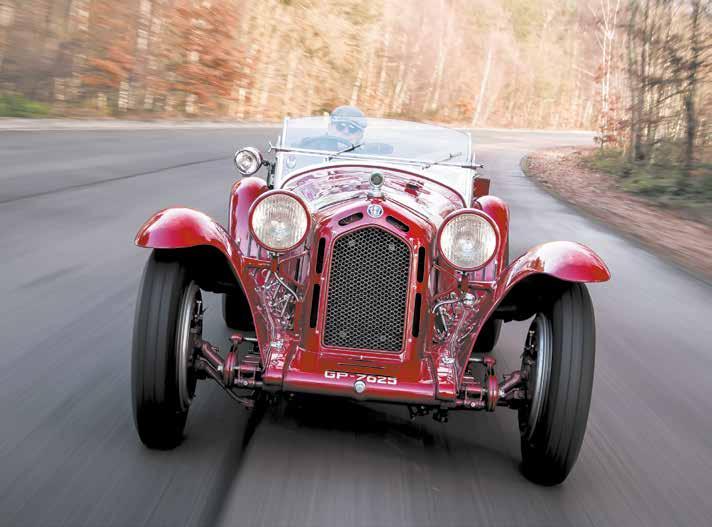

Ian Allison explains why the Museum’s Wellington ‘R for Robert’ is the exhibit he always visits when he comes to Brooklands.
Photos: Brooklands Museum Collection
Before I became a Member, the NapierRailton epitomised Brooklands for me: big, brutally handsome, loud and powerful. It dripped the spirit of the 1930s and those who tackled the banking. Now I’m more familiar with the Collection, it’s the Wellington ‘R Robert’ I have to see every visit.
The aircraft is a remarkable survivor. Having been isolated at the bottom of Loch Ness for so long, it gives us a real insight into how aircraft of the 1930s and ’40s were built and operated. It’s more original than the WW2 aircraft which have remained above ground and kept in flying condition, although I have absolutely no issue with the concept of using modern equipment to keep a Spitfire in the air.
Sadly, each issue we do lose some of our Members and we’d like to pass on the condolences of the Brooklands Members, Chairman and Committee to the families of the following who we have been notified have recently passed away.
Patricia Moore, who passed away after an extended battle with cancer. She loved the Museum and her many visits with her husband, David, over the years. David continues their Club Level Membership.
Michael Gambles was a Member with us for two years and passed away in July.
Christine Morris was a Member with her husband Geoffrey for more than 20 years and sadly passed away this summer.
Brooklands also has a Hurricane of similar provenance, so why choose the Wellington? There’s a family connection. My Mother, Dorothy Allison, worked for Vickers Armstrongs (VA) at the Broughton factory, though we always call it Hawarden, when Wellingtons were built there. I know that ‘R Robert’ was built at Brooklands, but it’s typical of what my Mother would have seen in assembly. I’m intrigued by the visible construction methods. My Mother’s job with VA was in the factory police, so she and her sister who joined VA with her were not always the most popular members of the workforce.
There’s another connection, too. I never met my cousin-once-removed,
Geoffrey continues his membership with the Museum.
Michael Preston. A Club Level Member for six years who loved volunteering at the Museum and made a point of spending time there on each of his visits to the UK. His friends and family hope to hold a memorial dinner to celebrate Michael’s life and support of the Museum next year.
Andrea Roberts was a Member with her husband David for two years and sadly passed this year. David continues his membership with us.
Neil Atkins was a Volunteer on the VC10 team and long-standing Member who sadly passed away earlier this year.
Jimmy Lewis. He was a rear gunner on a Wellington squadron. His aircraft failed to return from a sortie to Kiel in February 1943 and Jimmy has no known grave, so his name appears on the Air Forces Memorial at Runnymede.
On every visit to the Museum, at some point you’ll find me standing by the tail of ‘R Robert’, staring at the rear turret. I try to imagine what it must have been like for a gunner, crammed into that tiny space, night after night. And my imagination fails.
Tell us about your favourite Brooklands exhibit or object by getting in touch with the Editor at: brooklandsbulletineditor@gmail.com
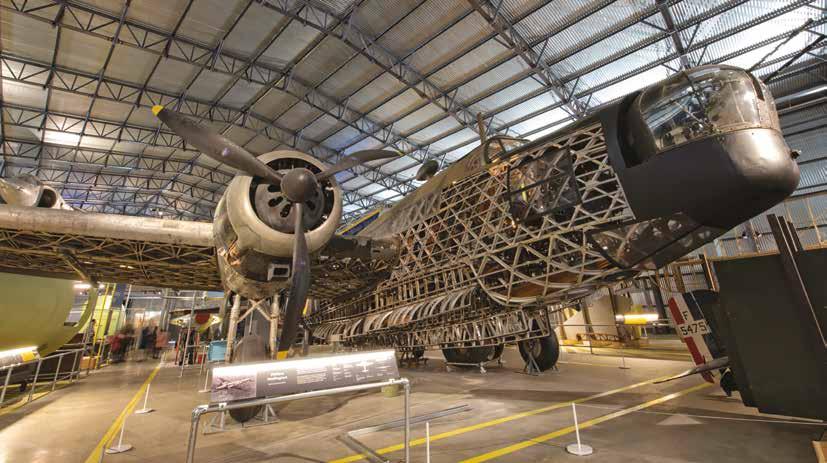
David Nicolls passed away on the 1 April. David was a Member and a founder of the Motor Vehicle maintenance team. He spent numerous hours working on the old cars and enjoyed bringing his grandchildren to the Museum. In time, the family would like to buy a bench for the motor maintenance team.
Charles Stewart was an Individual Member for 12 years, who passed away in April.
Edward Winning was an Individual Member for 17 years who sadly passed away earlier this year.
Cynthia Waters was a Double Member with her husband Frank, who continues to be a Brooklands Member.
Kenneth Day, who passed away on 31 July just weeks before his 100th birthday, served in the RAF before following a career in international banking which put him in good stead for his role as honorary treasurer of the Brooklands Society.
Ken’s main interest was Alvis and he was member 199SE of the Alvis Owners Club, being appointed its General Secretary on 6 September, 1953. He kept this role until 1970 when he was made President and later President Emeritus. Ken was a respected authority on Alvis cars and wrote the definitive book on the company called The Story of the Red Triangle which was first published in 1966 and is now on its fourth edition. This book earned a distinction from the Society of Automotive Historians Inc and was followed by a second book, The Alvis Car 1920 – 1966
It was seeing Alvis cars racing at Brooklands as a youngster in 1932 that Ken became interested in the marque, particularly the Speed 20. At Brooklands, he saw the famous race between Sir Henry Birkin and John Cobb with both drivers at 140mph on the top of the banking. Traffic outside was still at a stately 25mph, so the difference was astounding and exhilarating. In 1938 he marshalled at the Mid Surrey AC West Country Trial, again impressed with the two black lines made by the wheelspin of the Alvis Silver Eagle.
In 1953, the Alvis Owners Club was about to close down, but Ken and a

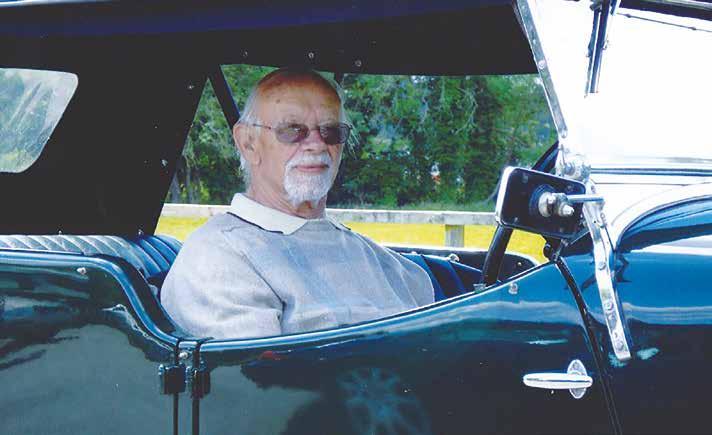
friend revitalised it and he took on the role of General Secretary. Ken’s first Alvis was a Firefly which was followed by the restoration of a Speed 20 in 1957. He attended the unveiling of the Brooklands memorial in 1957 at the invitation of Sammy Davis who was the club’s patron and rode in the parade in the Alvis Works FWD. Ken owned several Alvis cars himself including three Alvis Speed 25s and had driven every model of Alvis produced.
Ken was invited back to Brooklands by Bill Boddy in 1967 when it was first opened
to the public, which whetted his interest once again for the track. He became an active member of the Brooklands Society from 1980, taking on the role of Honorary Treasurer and later Vice-President. With the Society, he became involved in the work which led directly to the formation of the Brooklands Museum Trust Ltd, which runs the Museum today. He would later become a Brooklands Member.
Ken’s work took him all over the world and he continued his Alvis interest, acting as a concours judge in Australia and New Zealand, and even took one of the early Concorde flights to Bahrain. His other main interest was sailing and he was secretary of the West Solent Cruiser Racing Association.
When Ken retired from the Alvis Owners Club council in 1988, Ernest Shelton said: ‘His name stands out in the history of the club. When Ken Day became General Secretary, the club grew in standing and he is fiercely jealous of the dignity of the club.’ Ernest then proposed that Ken Day accept the unique post of President Emeritus.
In 2016, Ken donated his archive to the Alvis Archive Trust to whom we are indebted for the information and photos in this obituary. Ken wrote several articles on the saving of Brooklands and the Brooklands Society. Thanks to the Alvis Archive Trust, Alvis Owners Club and Tony Hutchings.
Cynghordy
Llandovery
Carmarthenshire, SA20 0NB
Castrol’s Classic Oils are produced to original viscosities and contain the necessary anti-wear additives to provide overall protection of veteran, vintage and classic vehicles

Tel: 01550 750274
e-mail: info@cambrianway.com
Original Castrol grades:
www.cambrianway.com
XL30, XXL40, GP50, XL20w/50 R40, 10w/60 syn., EP80, EP90 ST90, EP140, D140, LS, B373
Explore some of the best roads and scenery in the UK
Castrol Classic Oils



TQD TQF, RR363, Brake Fluids Greases, Semi-Fluid greases etc
2
+44 (0)1954 231668
2019 / 20 Club Tour Packages
sales@classicoils co uk
l Small size from 500ml to Home Workshop sizesFree UK mainlandNext Day Delivery offers
Looking for a venue for your club or friends in 2019 or 2020 contact us to discuss packages and dates. We already have 18 clubs booked in 2019 & 7 for 2020 Tours include dinner, bed & breakfast, drinks reception on 1st night, a welcome pack containing a memento of the weekend, rally plate, window sticker, Ordnance Survey Mid & South Wales road map, road books containing the route for each day & entry to a local attraction
www.castrol.com/uk/classics

Valvemaster™ & Valvemaster™ Plus Octane Boost Improves performance, protects against valve seat recession and fuel system corrosion Valvemaster™ Plu raises fuel by up to 2 octane Classic Valvemaster™ formerly branded as Castrol Valvemaster™



Prices from £252.50 per person for 3 night tour.
2019 ALL MAKE TOUR DATES
Open to any Make & Age of Car
5th to 8th July – 11 cars booked, 2 rooms left
5th to 8th August – 4 cars booked, 7 rooms left
s@classicvalvemaster co uk
Cynghordy Llandovery
Carmarthenshire, SA20 0NB
Tel: 01550 750274
e-mail: info@cambrianway.com
www.cambrianway.com
Explore some of the best roads and scenery in the



MAKE
With
2
Looking for a venue for your club or friends in 2019 or 2020 contact us to discuss packages and dates. We already have 18 clubs booked in 2019 & 7 for 2020

Tours include dinner, bed & breakfast, drinks reception on 1st night, a welcome pack containing a memento of the weekend, rally plate, window sticker, Ordnance Survey Mid & South Wales road map, road books containing the route for each day & entry to a local attraction.

Prices from £252.50 per person for 3 night tour.

2019 ALL MAKE TOUR DATES
Open to any Make & Age of Car


5th to 8th July – 11 cars booked, 2 rooms left


5th to 8th August – 4 cars booked, 7 rooms left






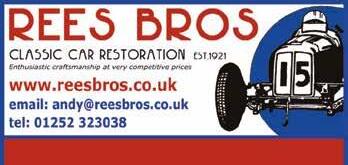
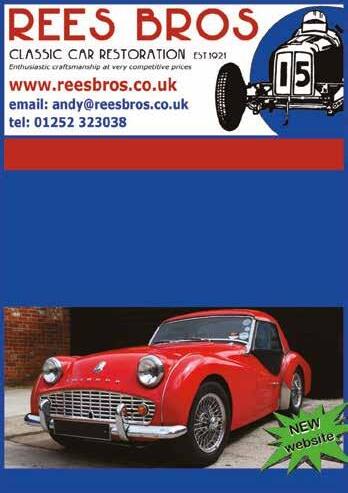





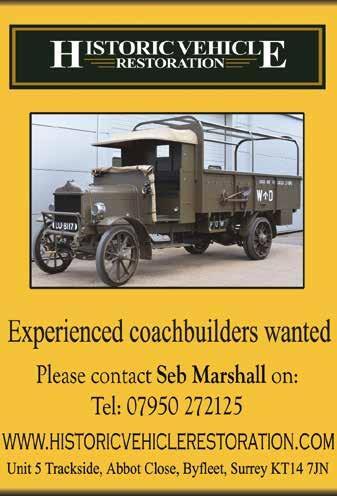




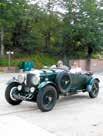
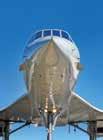
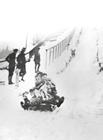


Former Brooklands Members’ President Sir Stirling Moss may no longer be with us, but his life and exploits continue to fascinate. None were closer to the action than Valerie Pirie, who worked as Moss’ secretary during the most prolific period of his racing career.
Despite her young age when starting in this job, Pirie quickly learned to hold her own with Sir Stirling, who led life as quickly off the track as he did on it. She was soon his confidante, as well as running much of his business and personal life. Some were surprised the two never became an item, but it’s the close bond between the pair that makes this book so interesting as it gives an unvarnished insight into Moss.

Pirie is frank about Moss’ love of a bargain and minding the pennies, yet she is unstintingly fond of her ‘boss’. Nowhere is this better demonstrated than her bedside vigil after Moss’ careerending crash in 1962 at Goodwood.
It’s the human details and interactions that make this 336page book much more than a biography or memoir. This is a very personal account of a friendship that endured long after Pirie stopped working for Moss in 1965. The book is subtitled ‘The inside story of a motor racing legend’ and it couldn’t be a more accurate description. For anyone with a love of motorsport in the fast-paced post-war years or who is intrigued by Sir Stirling Moss, this is a book you must read.
Paul LawsonThe Brooklands-built Vickers Wellington is unique among World War 2 bombers because it served throughout the full duration of the conflict. Despite this, the Wellington is often overshadowed by other aircraft from WW2, so Michael Napier’s book is a welcome redressing of this situation.
Running to 98 pages, it’s not an exhaustive catalogue of every Wellington ever built, but former RAF Tornado pilot Napier has researched his subject well. The result is a book that gives a detailed, objective and affectionate insight into the aircraft and the crews who flew it.
Vickers Wellington Units of Bomber Command is broken down into five chapters that follow a logical progression through the Wellington’s development, frontline career and subsequent roles during WW2. Each chapter includes accounts from air crew to give a personal appeal to the copy and there are also details of how many Wellingtons were in service at important points during the war.

While the most knowledgeable Wellington historians may not find much new in Napier’s book, it serves as a useful resource for those of us wanting to know more about this period of aviation. It is aided by the large number of photographs used throughout the book that ably illustrate the Wellington’s geodetic design and improvements made to the aircraft during its life. There are also 30 colour plates that show how the aircraft changed and the different markings it wore.
This is a well written, engaging and keenly priced book that is ideal for anyone with an interest in aviation history.
Alisdair SuttieMembers’ Administrator
Sarah Dover 01932 857381 ext 226 Mon-Fri members@brooklandsmuseum.com
Chairman
Neil Bailey 07970 206778 chairman@brooklandsmembers.co.uk
Secretary
Kevin Lee 01932 562246 kevin@abbeywalls.com
Tours and Trips
Angela Hume 07884 184882 Angelahume@brooklandsmembers.co.uk
Outreach
David Norfolk 01372 373929 david@davidnorfolk.wanadoo.co.uk
Talks
Steve Clarke 07860 355525 steveclarke@brooklandsmembers.co.uk
BM.tv
Mark Jarman 07710 783536 nonesuche@gmail.com
Bulletin Editor
Alisdair Suttie 07768 372440 brooklandsbulletineditor@gmail.com
Contributors
Katherine Allen, Steve Castle, Steve Clarke, Robin Cordery, Debbie Crawt, Sarah Dover, Anna Jackson, Mark Jarman, Martin Gegg, Angela Hume, Andrew Lewis, Tim Morris, Alex Patterson, John Pulford, Harry Sherrard, Roger Radnedge, Michael Sands, Gareth Tarr, James Thorne, Mike Venables
Advertising, Design and Production:
Hine Marketing, Tel: 01452 730770
Hill Farm Studios, Wainlodes Lane, Bishops
Norton Gloucestershire GL2 9LN
E-mail: nick@hinemarketing.co.uk
Address change and Bulletin distribution
queries
01932 857381 ext 226 members@brooklandsmuseum.co.uk
Brooklands Museum, Brooklands Road, Weybridge, Surrey KT13 0QN 01932 857381 Fax: 01932 855465 www.brooklandsmuseum.com
Brooklands Museum
Chairman Sir Gerald Acher CBE LVO gerryacher@brooklandsmuseum.com
CEO Tamalie Newbery ext 243
Director of Collections, Interpretation and Heritage
Alex Patterson ext 247
Visitor Experience Manager
Jenny Pettit ext 302
Volunteer & HR Manager
Aimee Nelson ext 303
Learning Officer
Laura Barclay ext 257
Curatorial and Archive Enquiries
Andrew Lewis ext 246
Chief Operating Officer
Amanda Squires ext 255
Head of Track and Air Events
Steve Castle ext 244
Concorde Bookings
ext 266
flyconcorde@brooklandsmuseum.com
Hospitality Sales Manager
Joanna Rodgers ext 251 hospitality@brooklandsmuseum.com
Marketing Director
Sam Hart ext 225
Email addresses are available on the Museum website www.brooklandsmuseum.com/about/ contact-us
Lying safely in its temperature-controlled storage area in the Museum archives is this iconic poster that is widely reproduced. For regular visitors to the Museum, it is quite easy for such works of art to blend into the background.
These billboard advertising posters were produced at a time that coincided with the Art Deco movement from which many take their influence. The 1000 Miles Race poster of 1932 puts you at the heart of the action as the driver flashes past, spare goggles flailing in the wind as he grips the steering wheel. This style is typical of the artist Gordon Crosby, an illustrator for The Autocar

Frederick Gordon Crosby, born in Sunderland in 1885, was a self-taught artist and draughtsman, and it is suggested he may have pioneered the concept of the exploded technical drawing and cutaway. Crosby joined The
Parking arrangements
Autocar in 1908, where he remained for 30 years. His large body of work also includes studies of aircraft, but it is his dramatic paintings of motor racing of a bygone age that command some of the highest prices for automotive art.
The Museum continues to build on this artistic legacy by commissioning event posters that hark back to the track’s heyday. This poster for the cancelled Easter Activities in 2020 by Luminauts cleverly uses recognisable elements from the 1937 Easter Monday race card to convey the nostalgia and excitement of the event for young visitors.
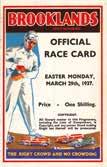

We are currently planning a larger story in the Bulletin about the iconic poster art of Brooklands. To enjoy your own piece of art, iconic Brooklands images are available in the Museum shop on a number of items and are ideal for a Brooklands-themed gift or Christmas present.
Please note that for all events marked ‘Parking in The Heights’, designated vehicles only can enter via the Campbell Gate, off Brookland’s Road. All other Members including Club level and visitors please park in The Heights or main public car park unless otherwise specified.
Parking arrnagements for other weekend events are:
Club level Members: entry via Campbell Gate and parking outside the Paddock. Period and classic vehicles only inside the Paddock by invitation. Please abide by staff directions.
All other Members and visitors: entry via main public entrance off Brooklands Drive.
This issue of the Brooklands Bulletin (incorporating The Spirit) is published on behalf of Brooklands Members, supporters of Brooklands Museum Trust Ltd, by Hine Marketing, Hill Farm Studios, Wainlodes Lane, Bishops Norton, Gloucestershire GL2 9LN. The statements and opinions expressed in the Bulletin are not necessarily those of the Brooklands Members’ Committee or Brooklands Museum Trust Ltd.
While every effort has been made by the Publishers to include correct information, they are unable to accept responsibility for errors or omissions. The Publishers, Brooklands Members and Brooklands Museum Trust Limited cannot accept responsibility in the event of misinformation or lack of source relating to images supplied by a third party by electronic or other means.
Charity number 296661. Please quote this if making donations or requesting them via a funeral director.
R olls -R oyce and B entley
H e R itage d eale R s
“ Attention to Detail”
B entley s 1 c ontinental 1959
P a R k W a R d d R o PH ead c ou P é
Considered one of the most desirable of all post-war Bentleys. Excellent condition.

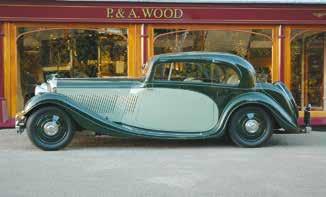

B entley R- t y P e c ontinental 1955
HJ M ulline R F ast B ack D Series with 4.9 Litre engine and automatic transmission. Excellent condition.
B entley 4 ¼ l it R e 1937
g u R ney n utting 2 d oo R c ou P é Very attractive and in concours condition.
Great Easton, Dunmow, Essex CM6 2HD, England
Telephone: 01371 870848 Fax: 01371 870810
E-mail: enquiries@pa-wood.co.uk www.pa-wood.co.uk
